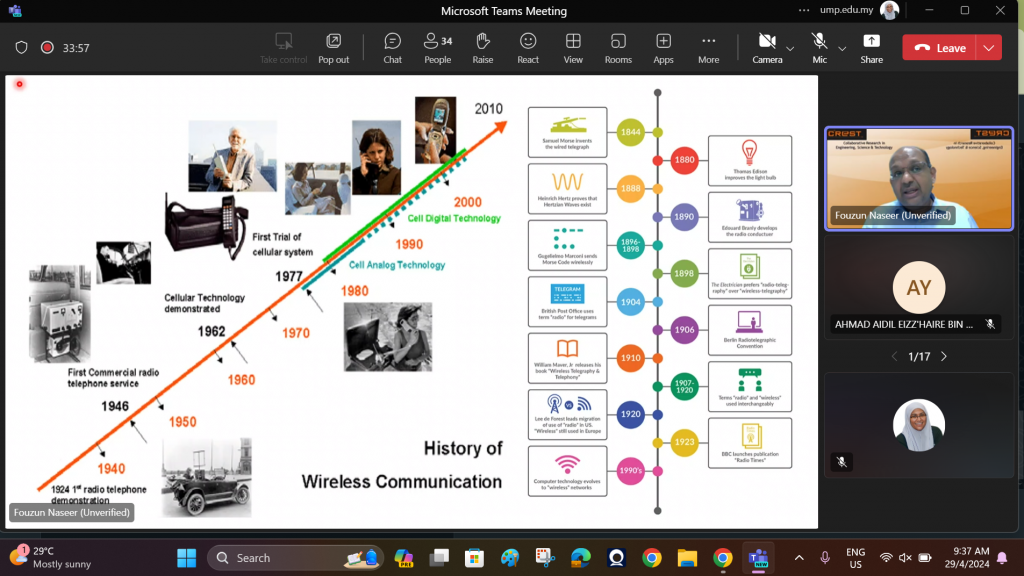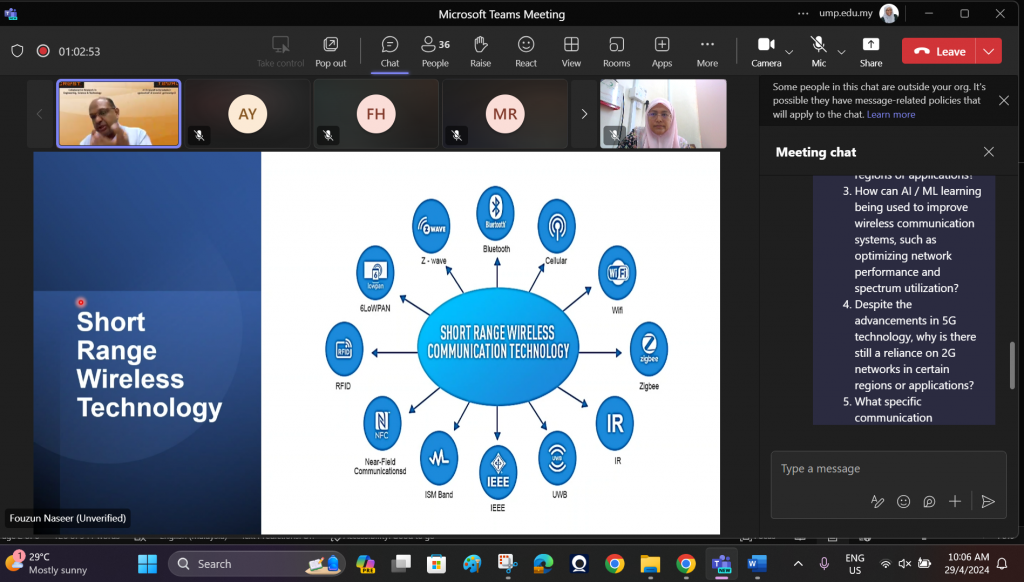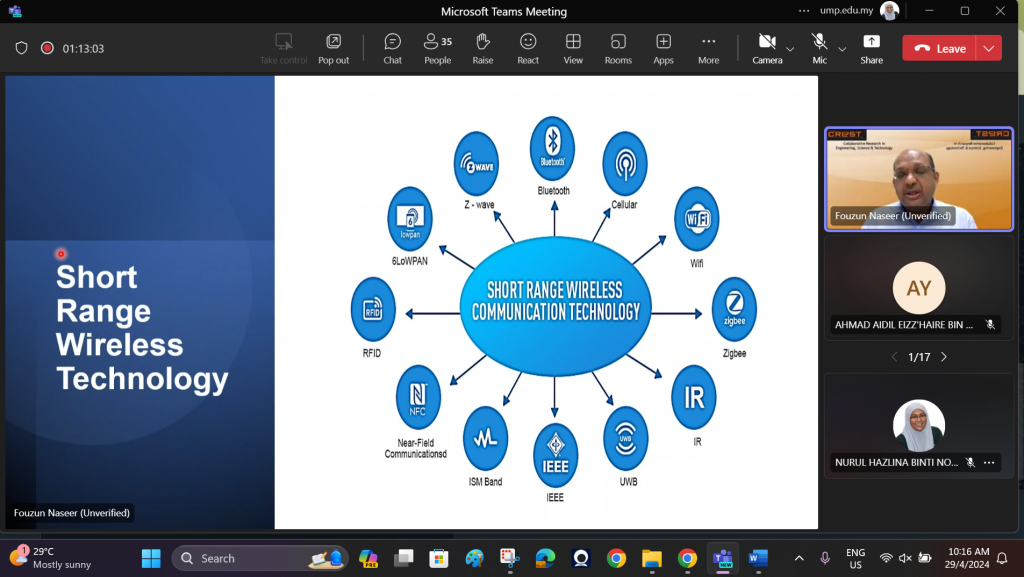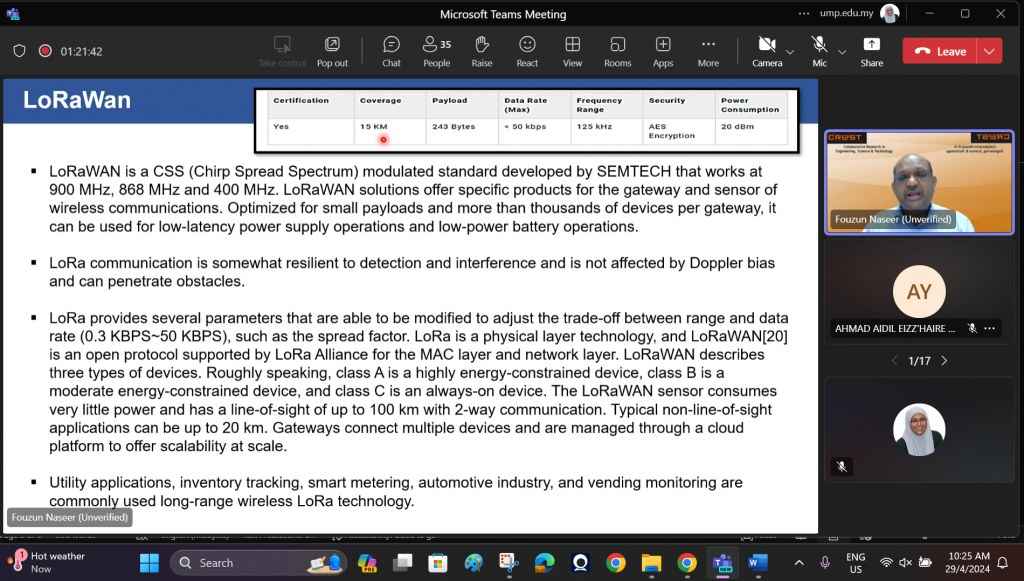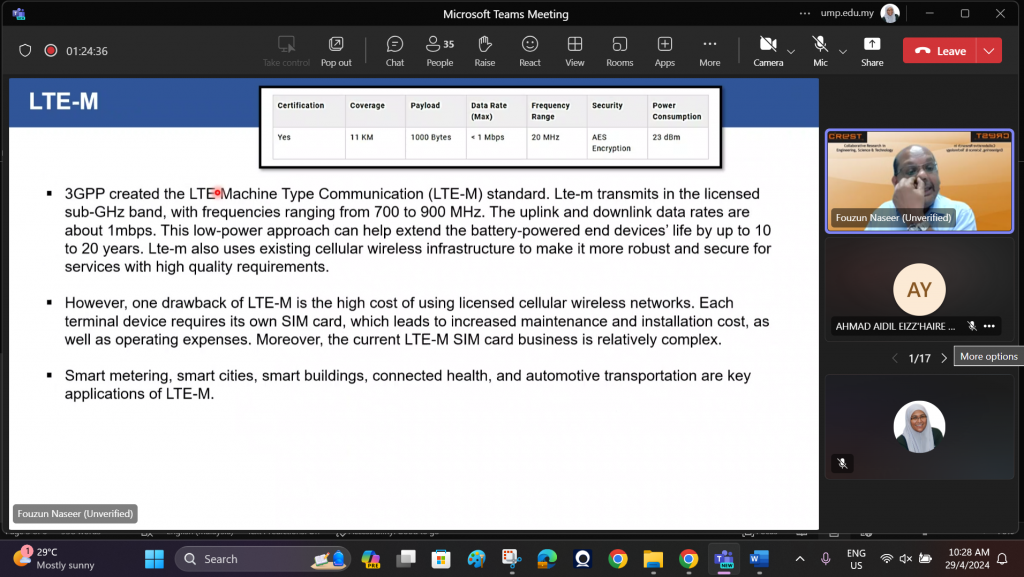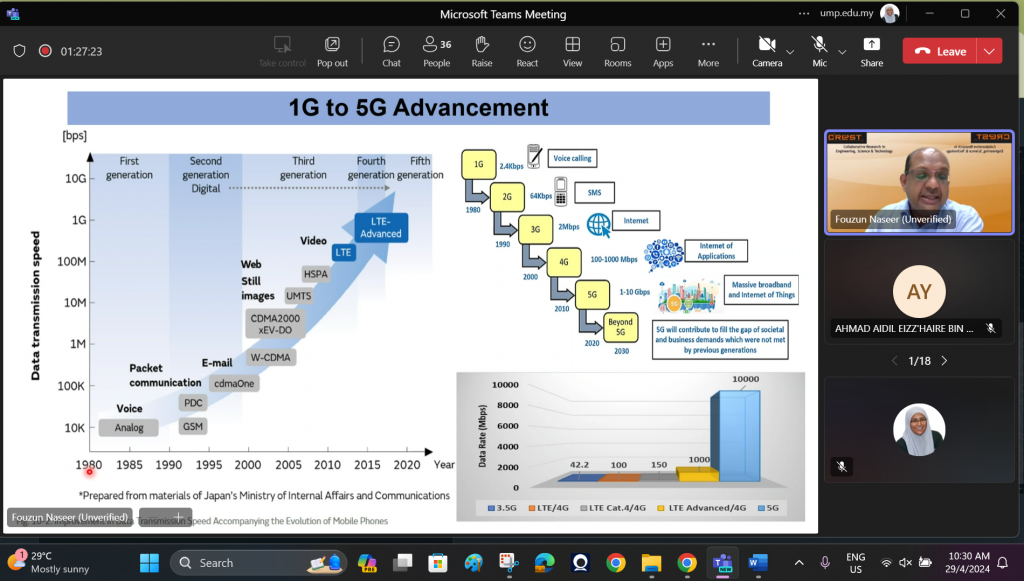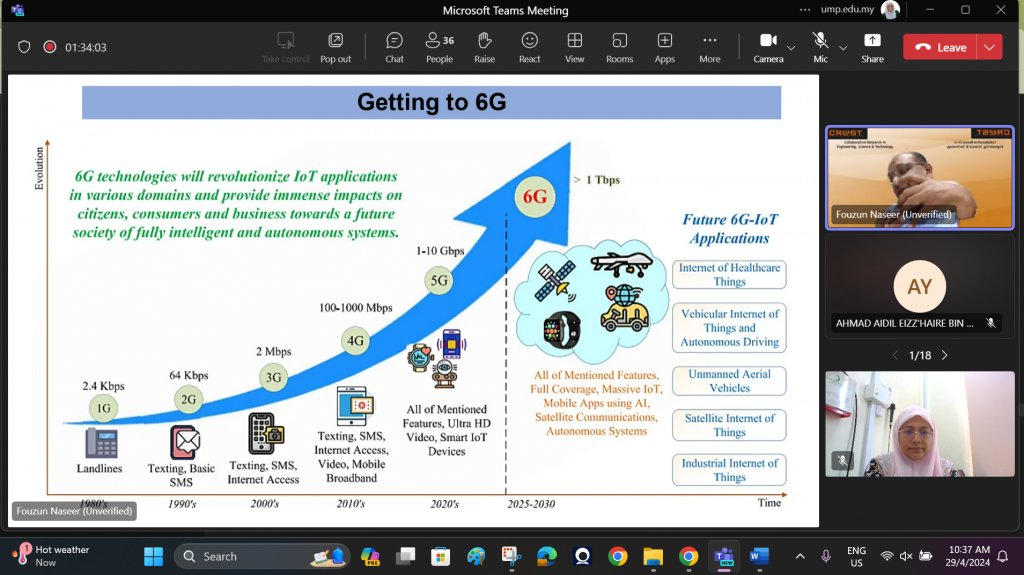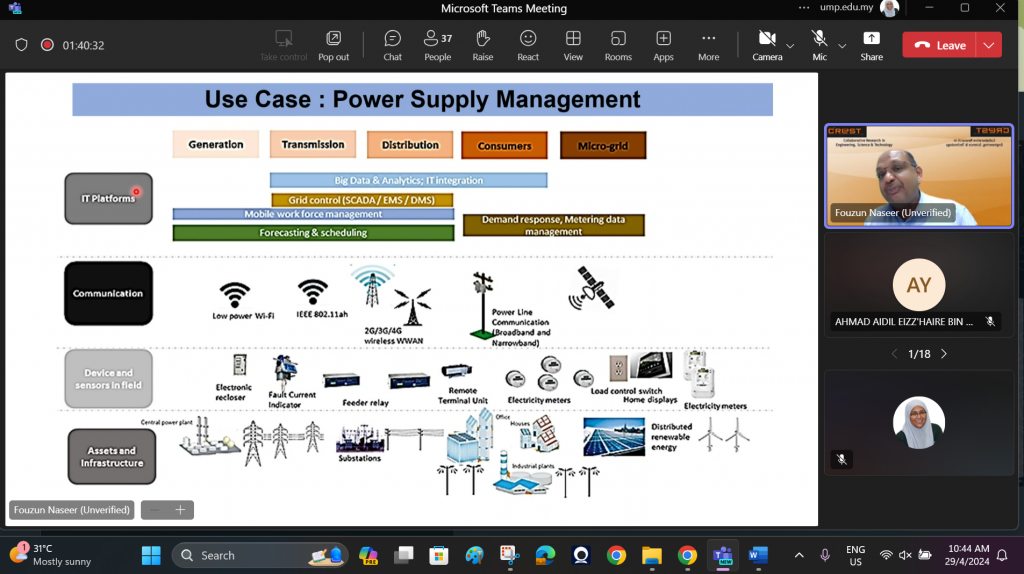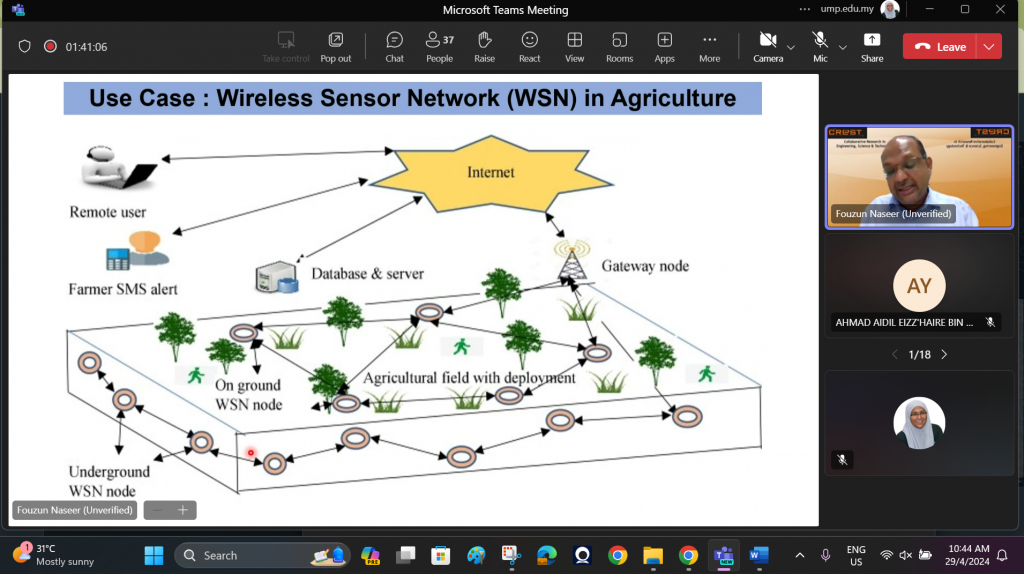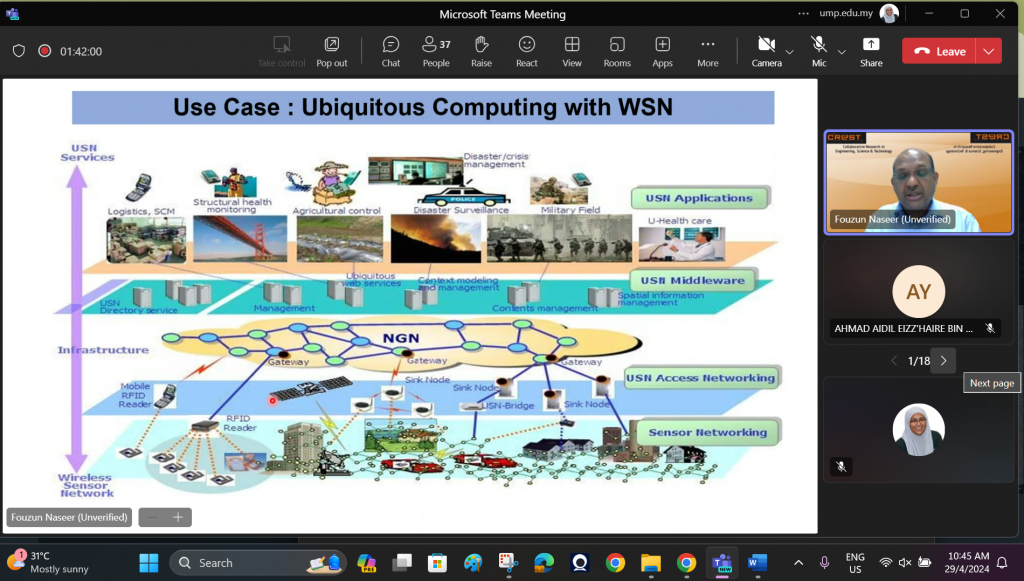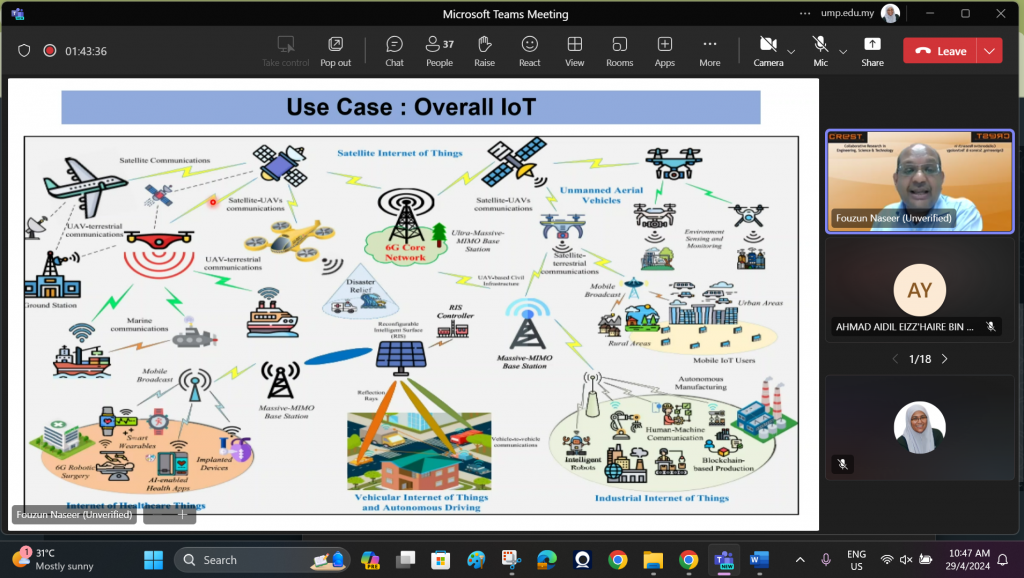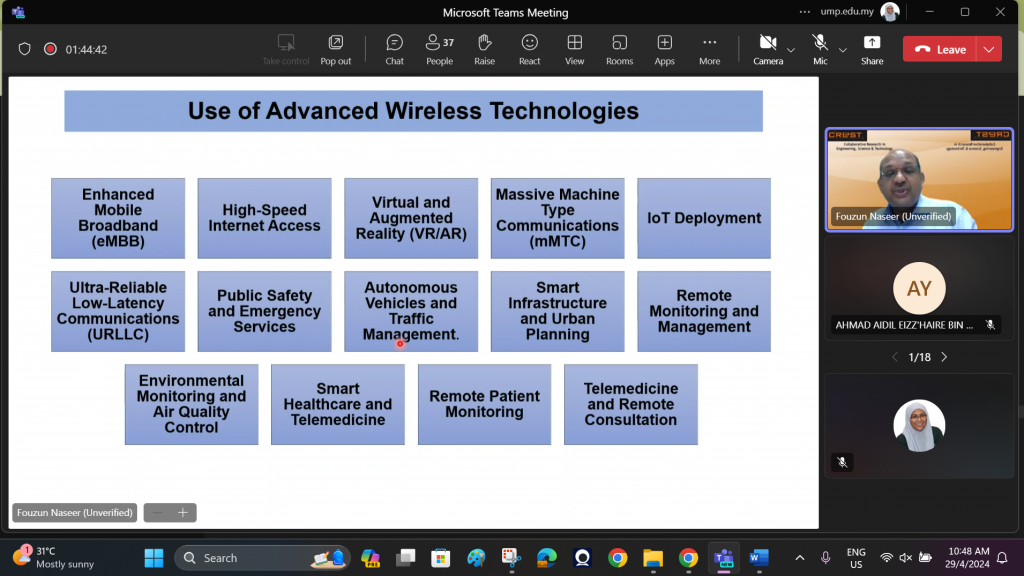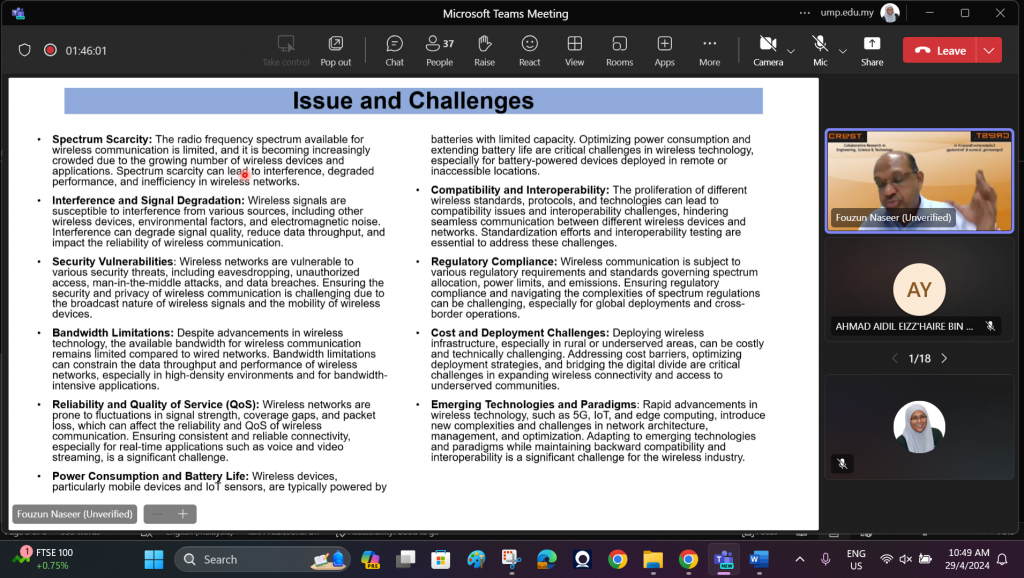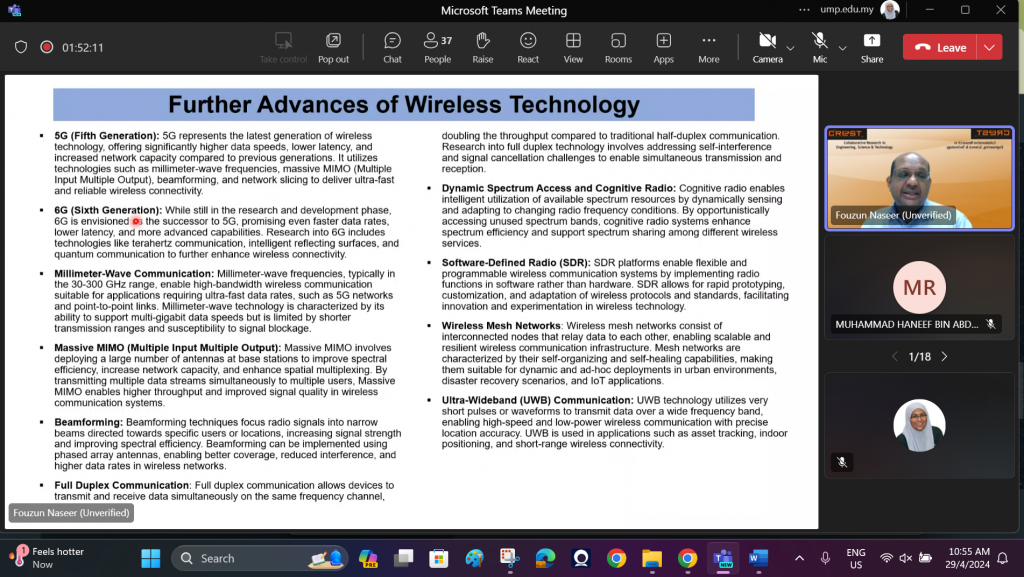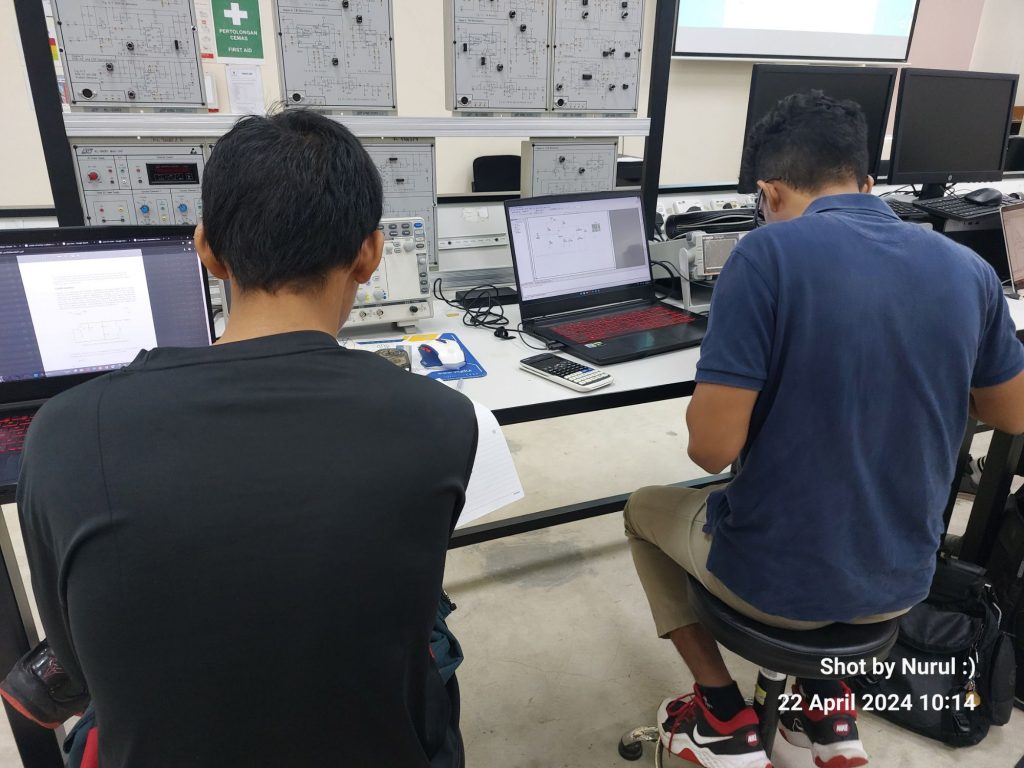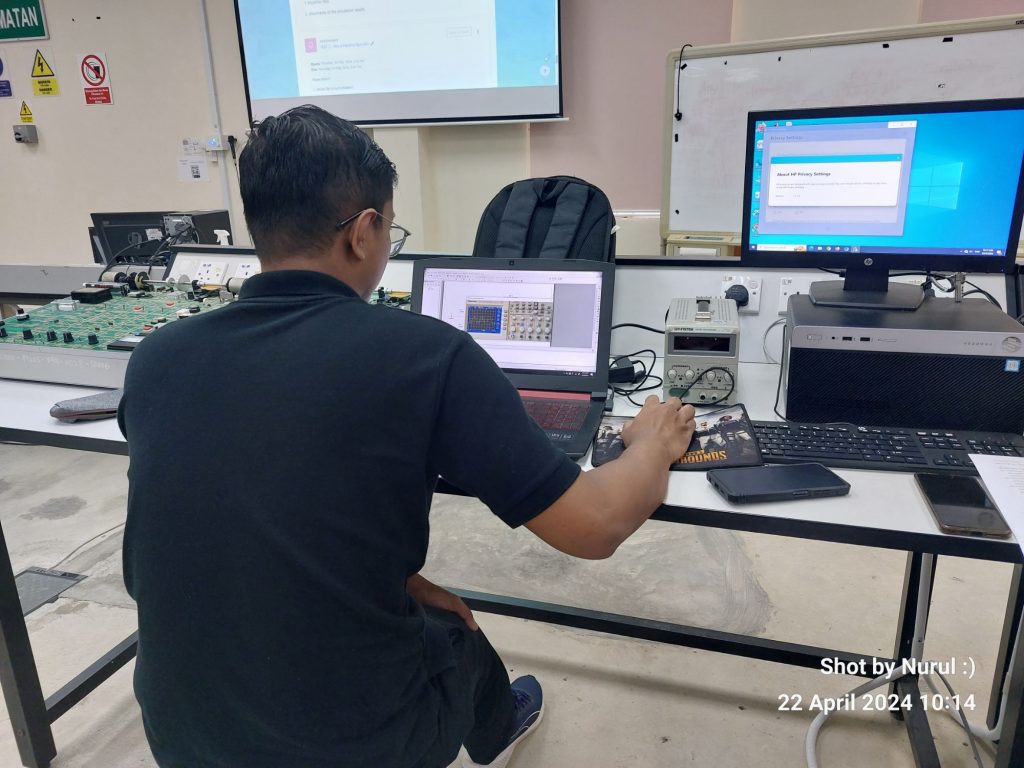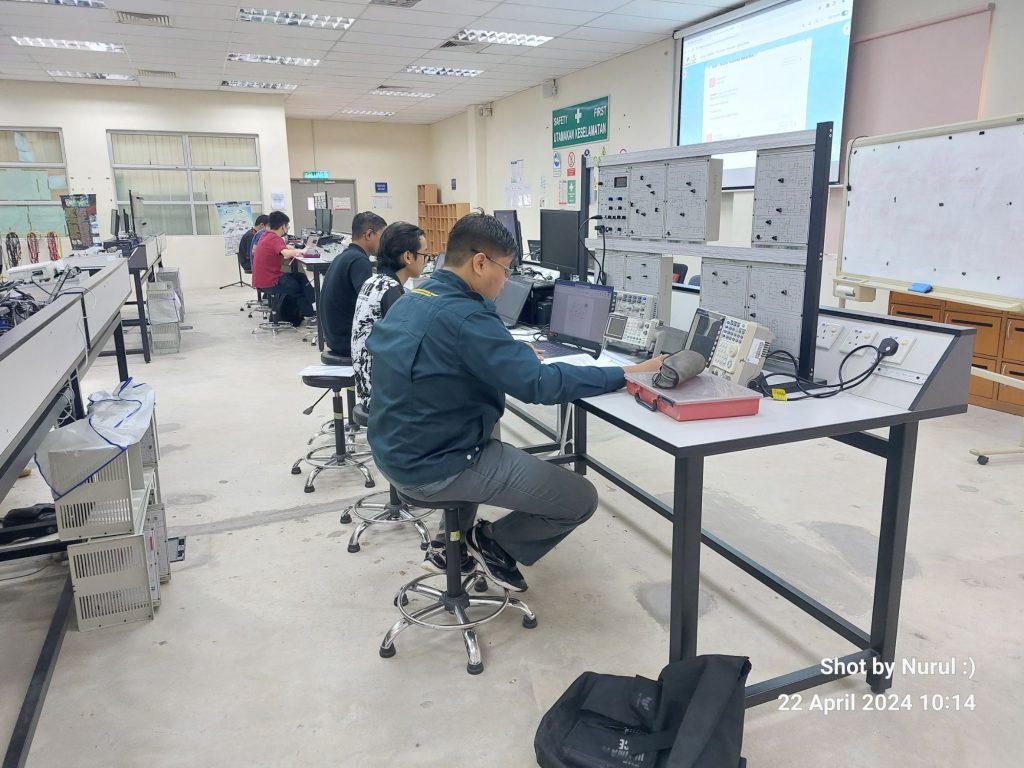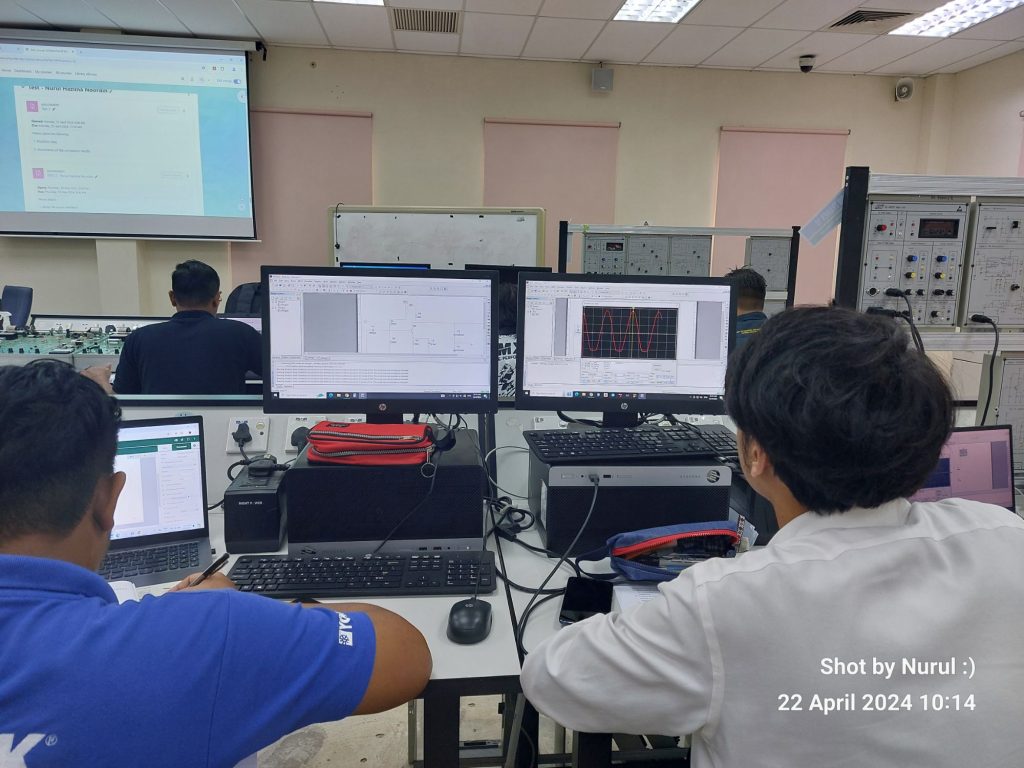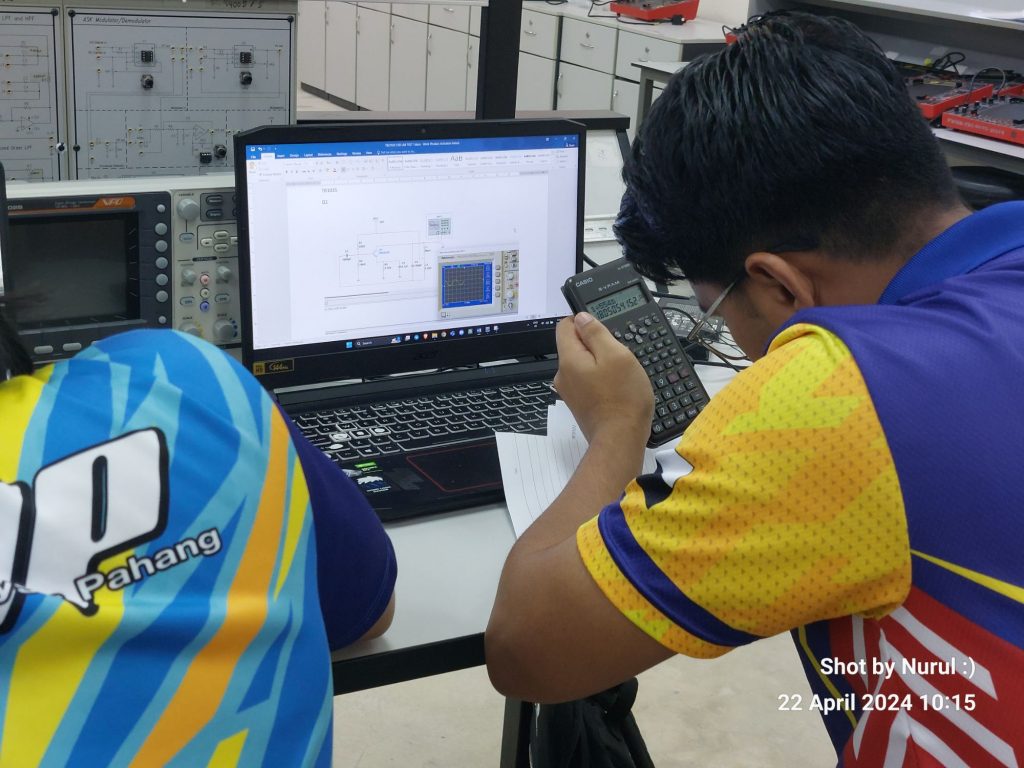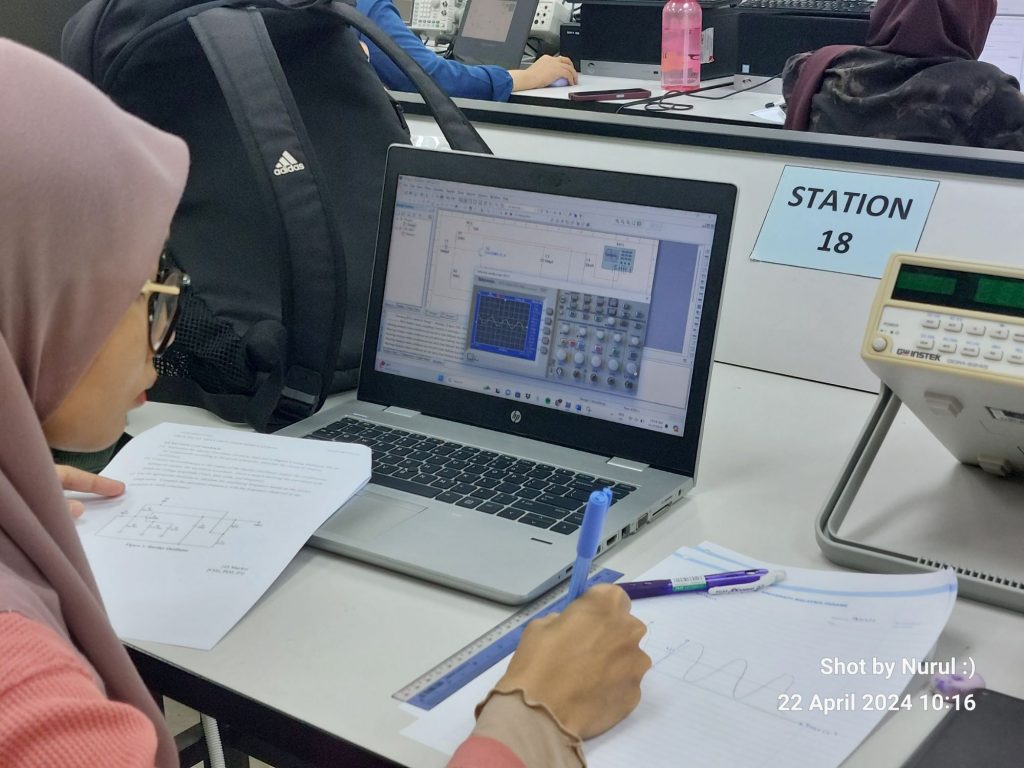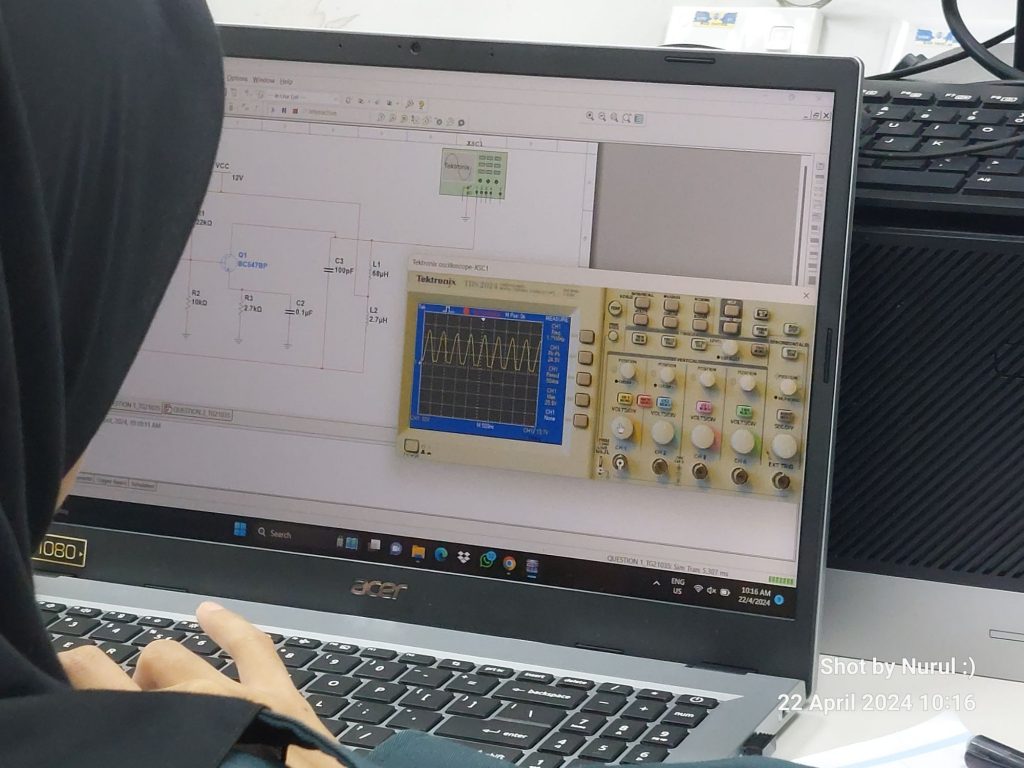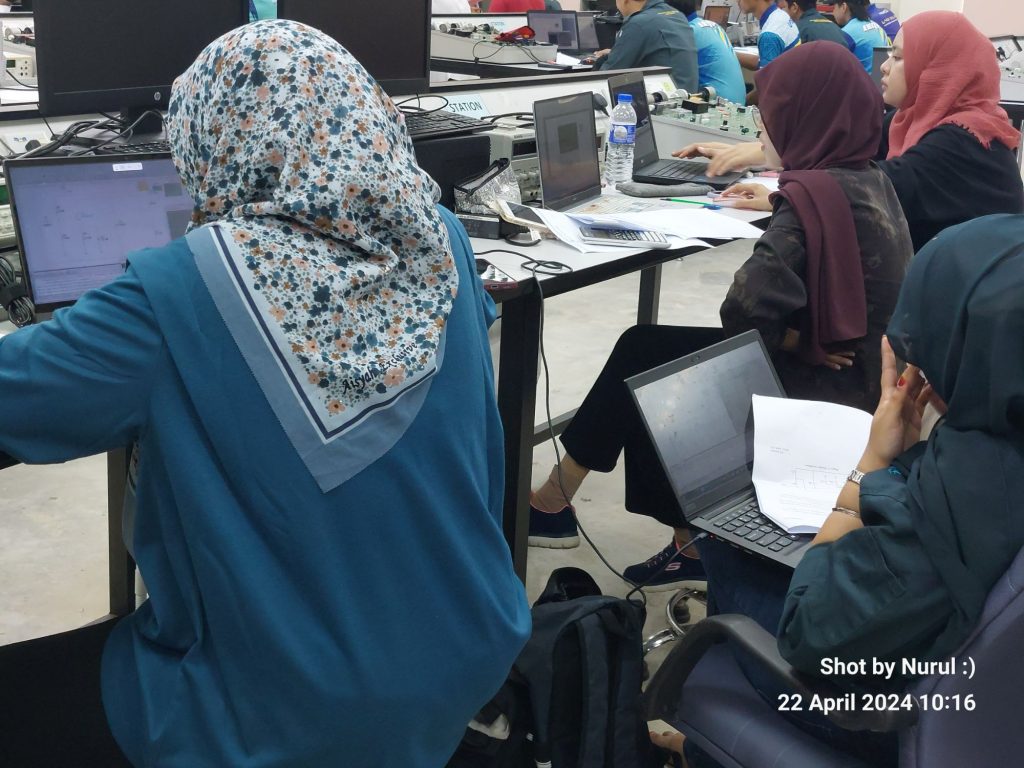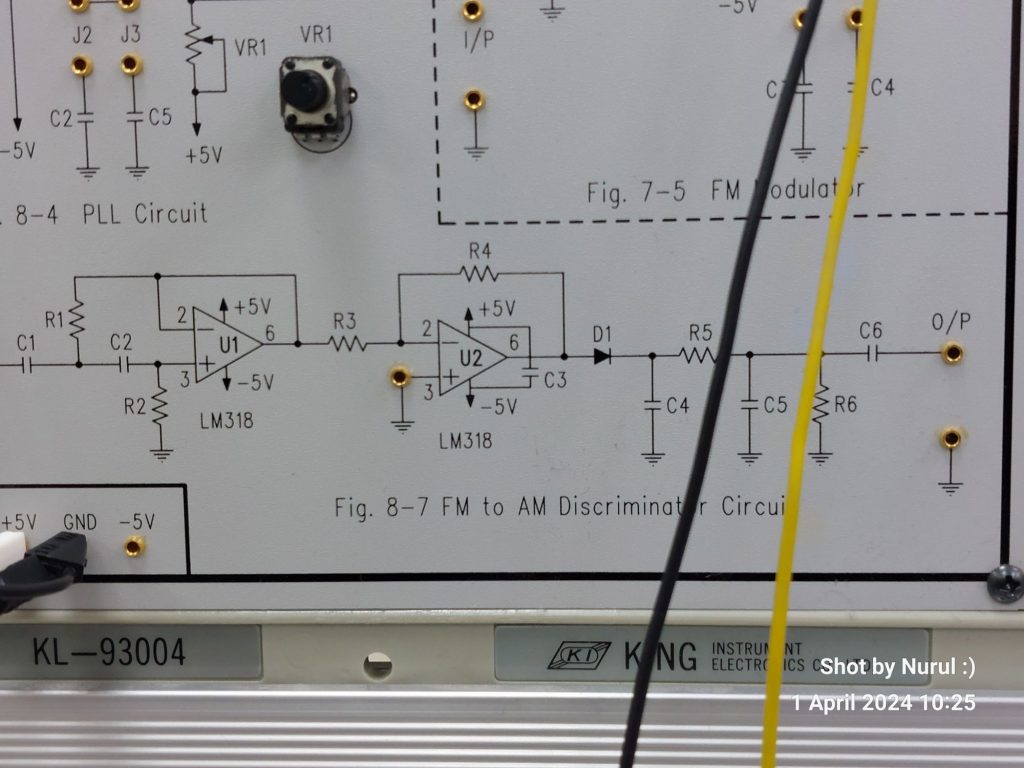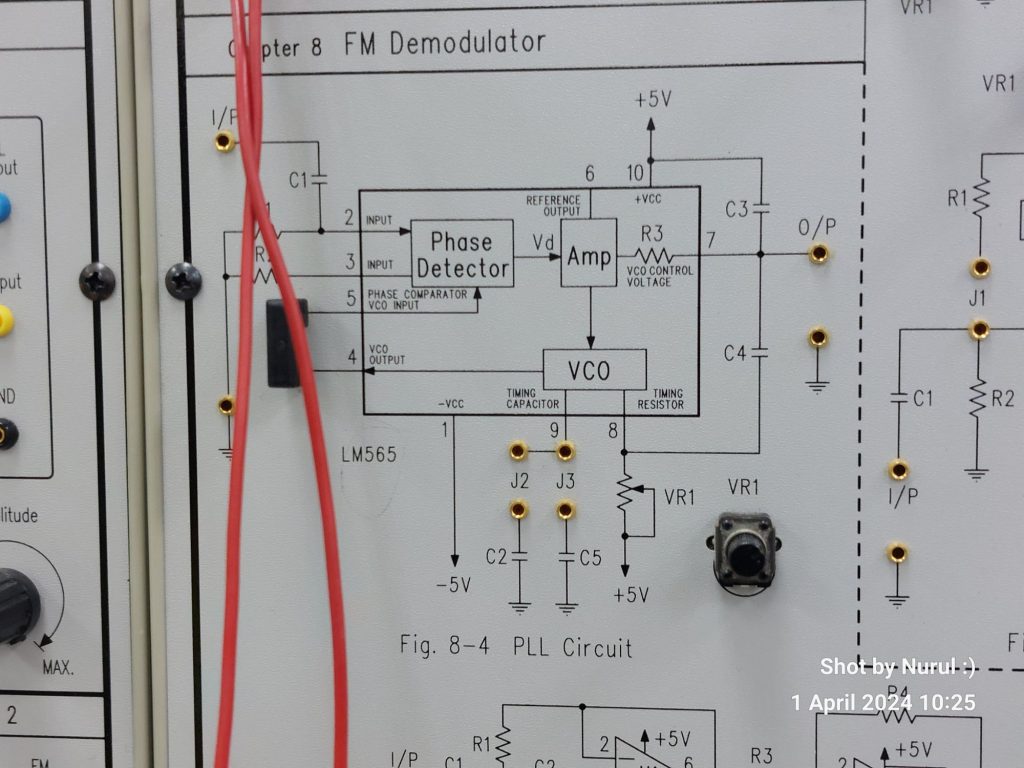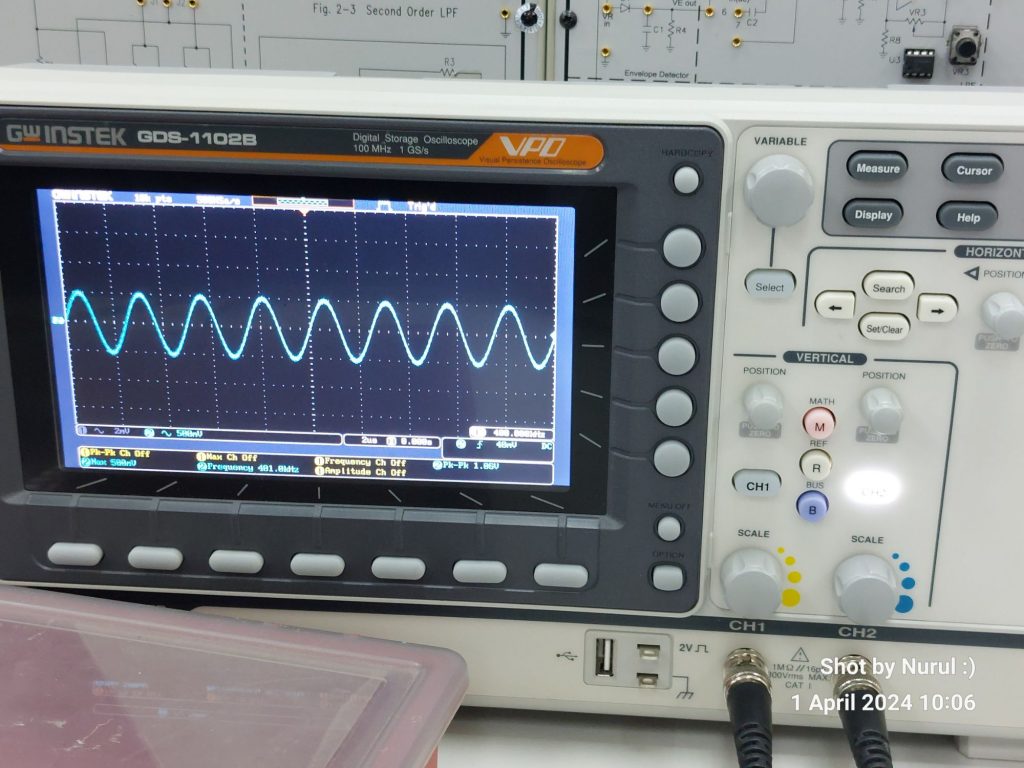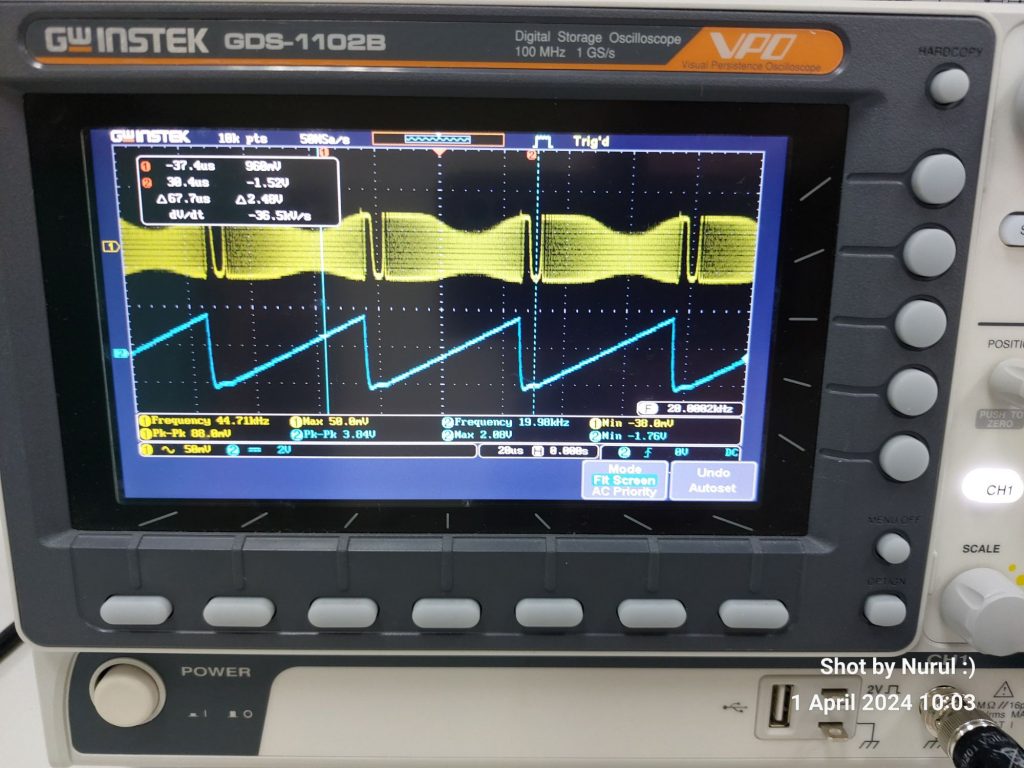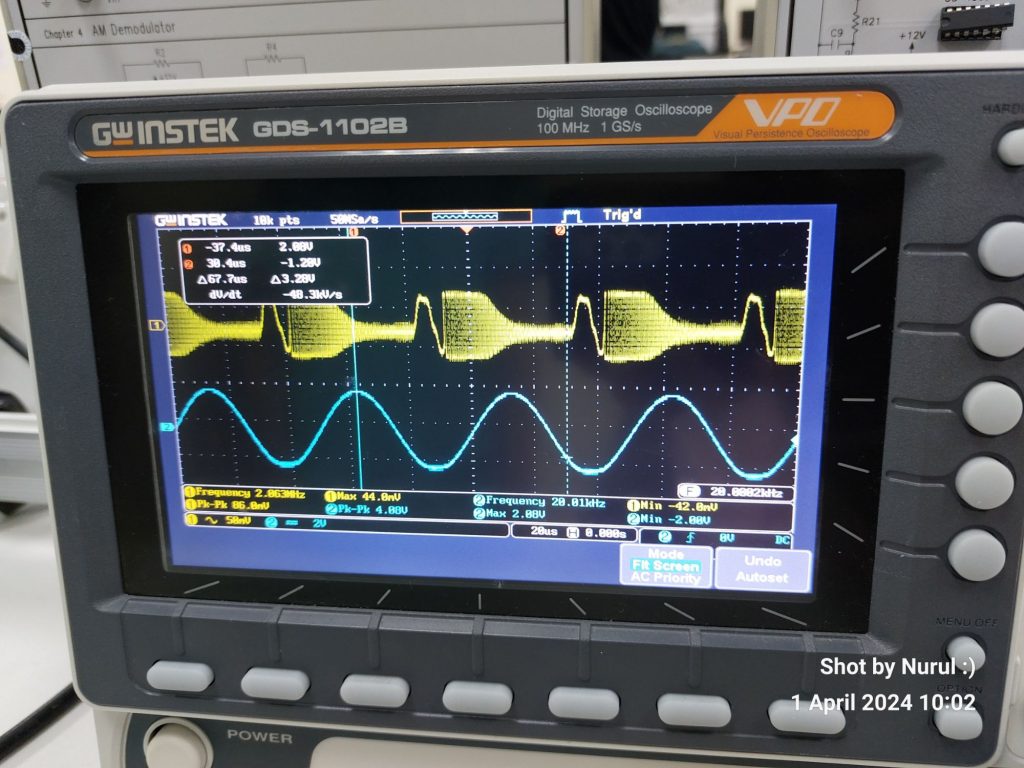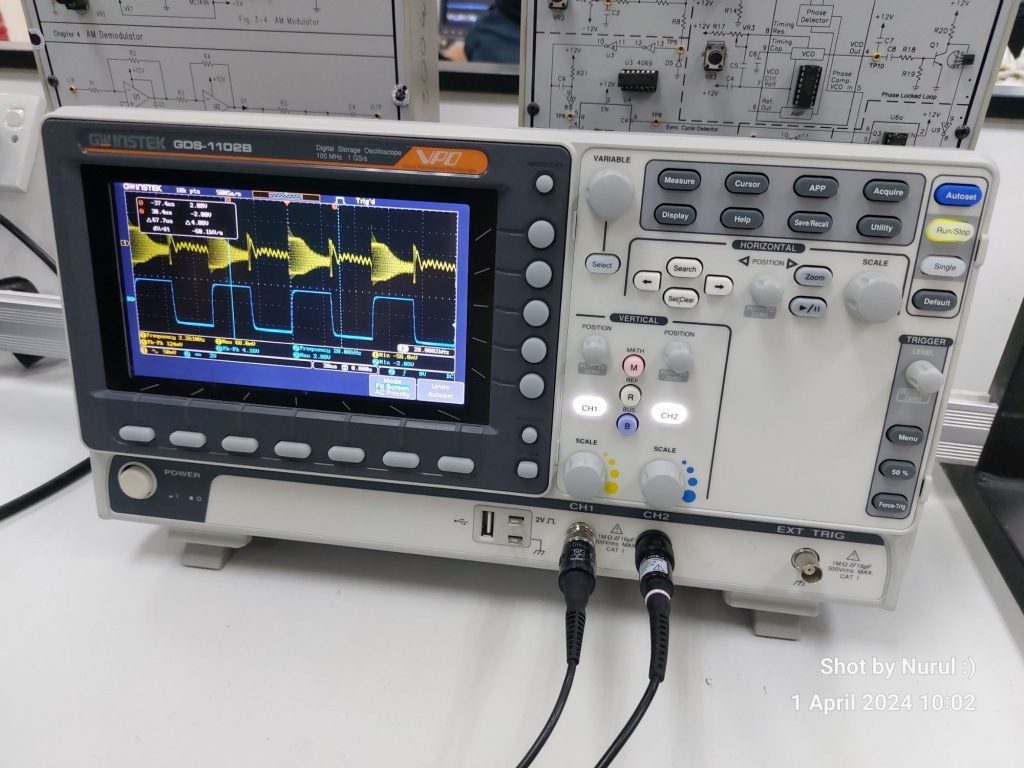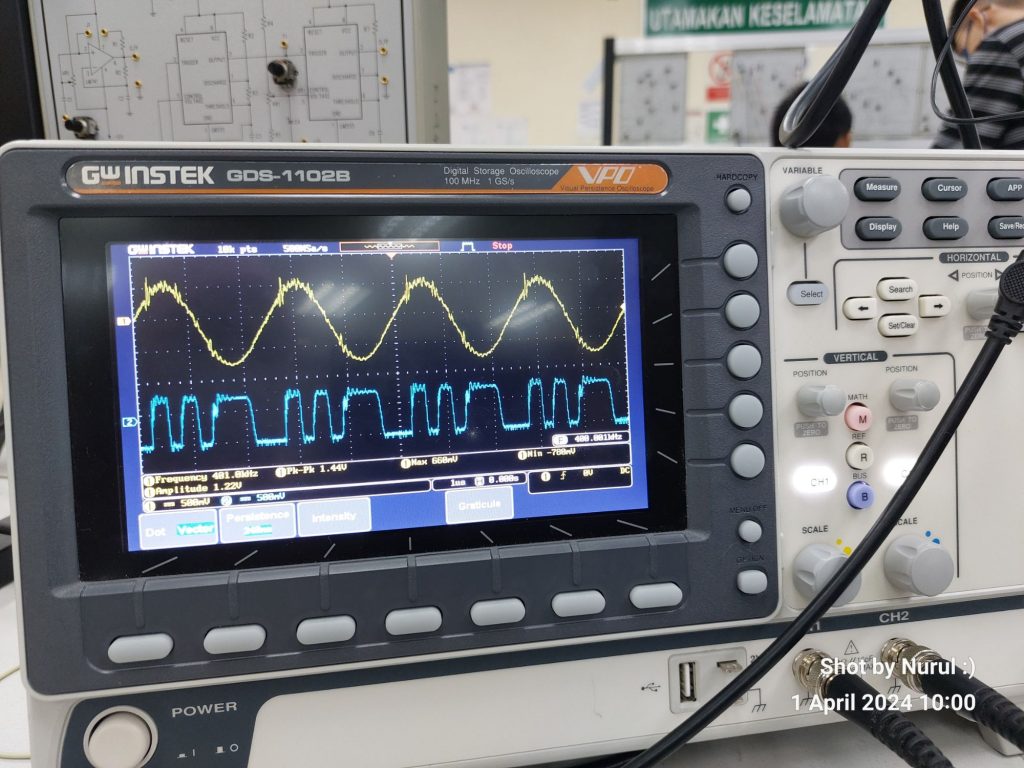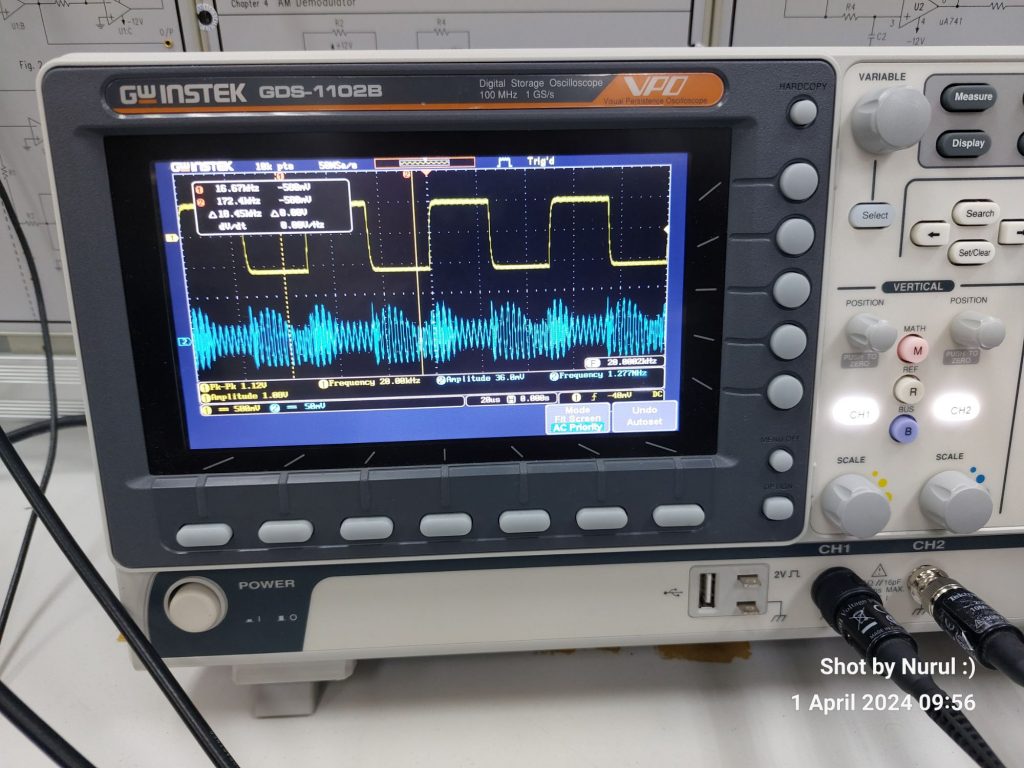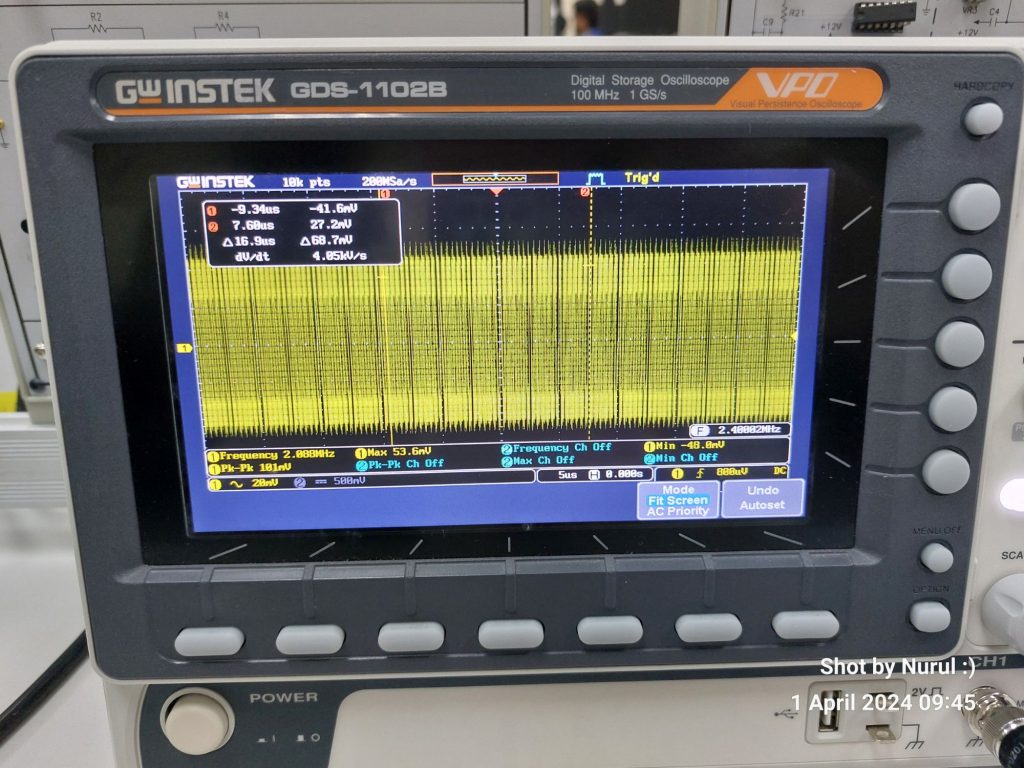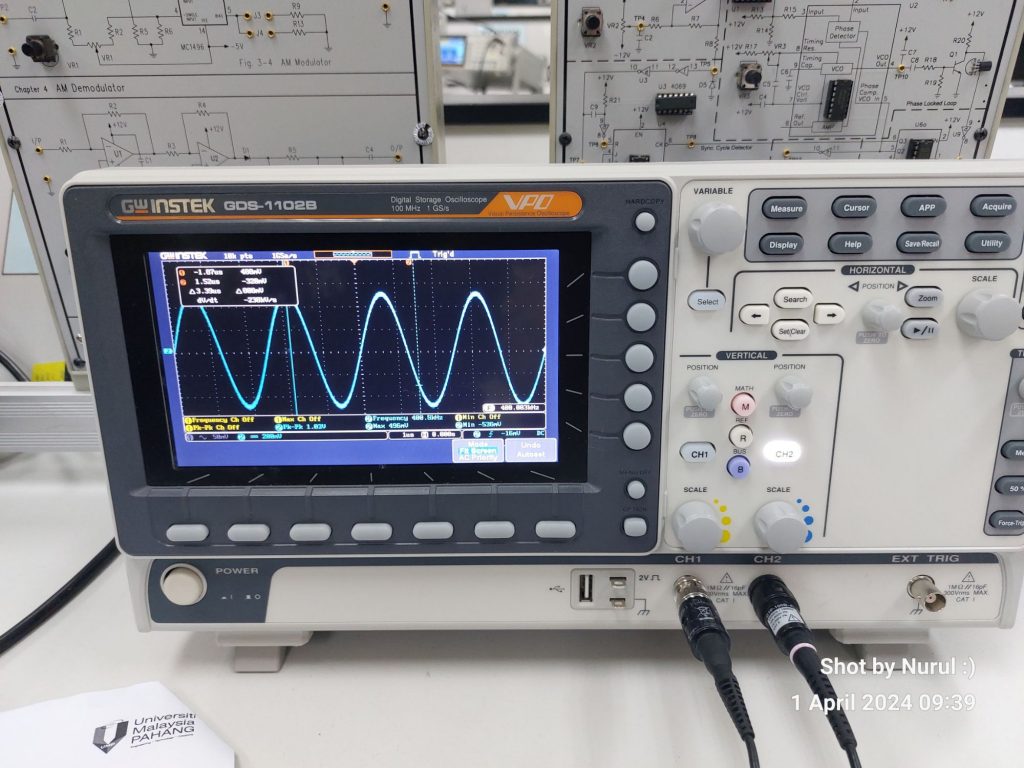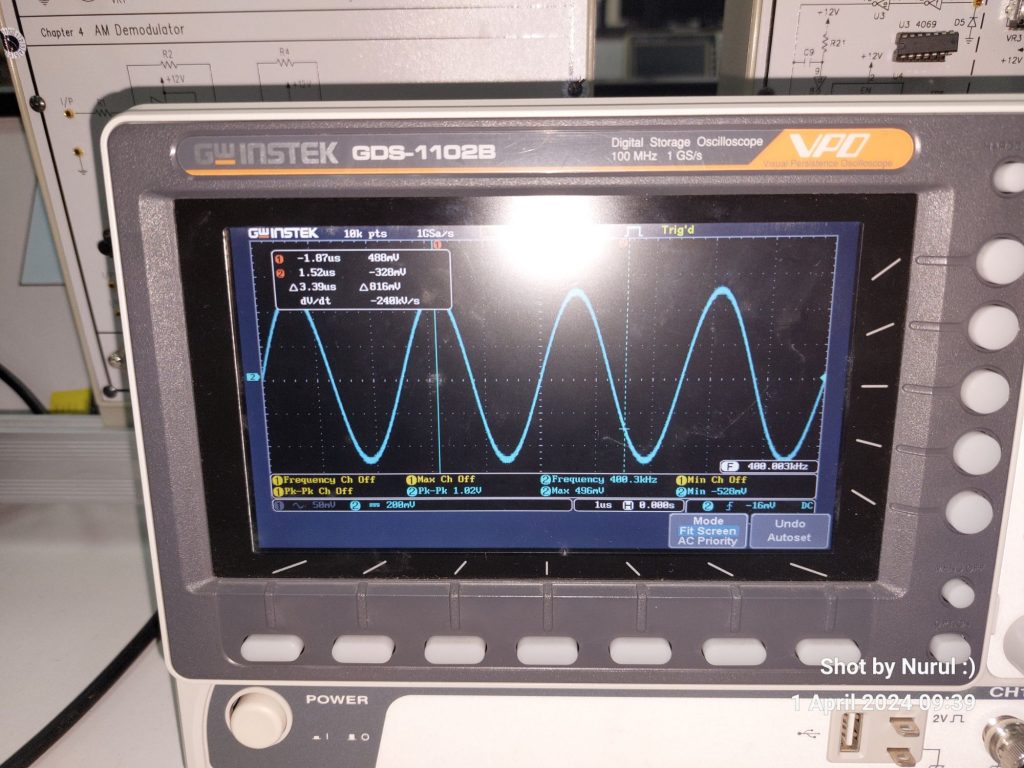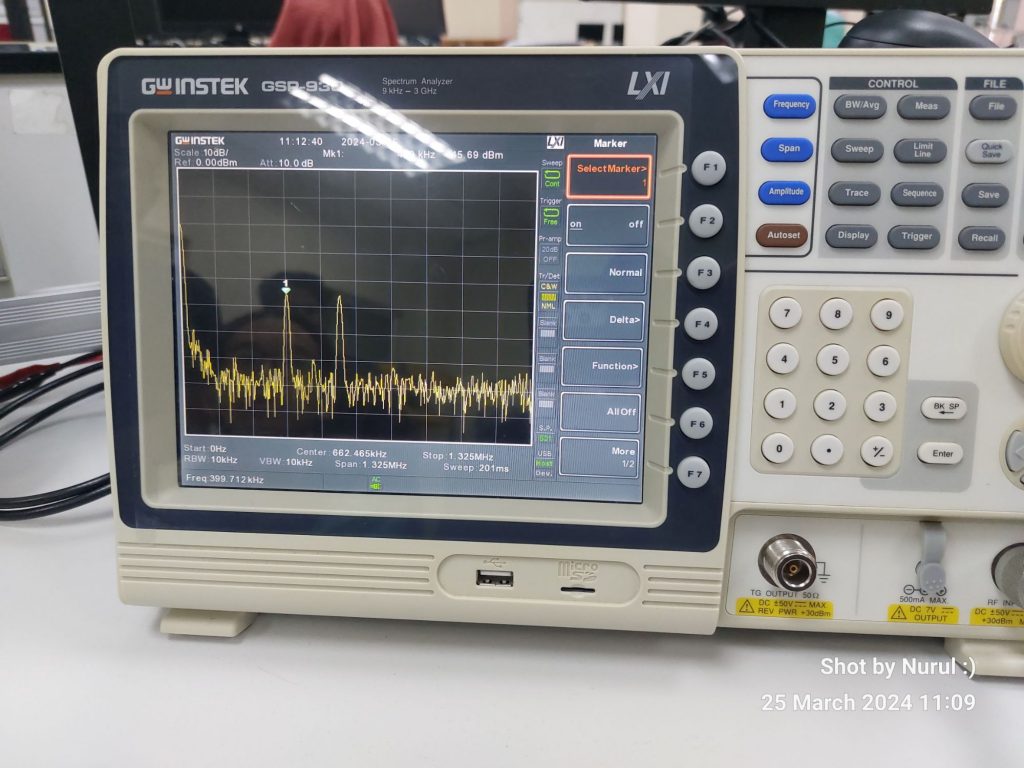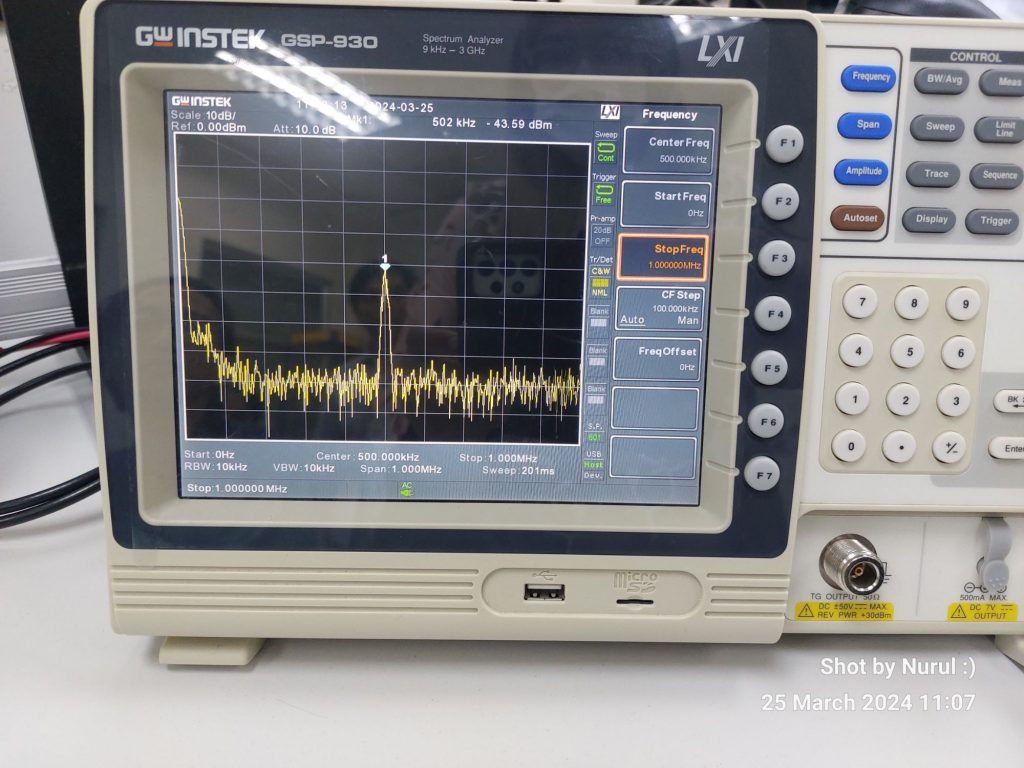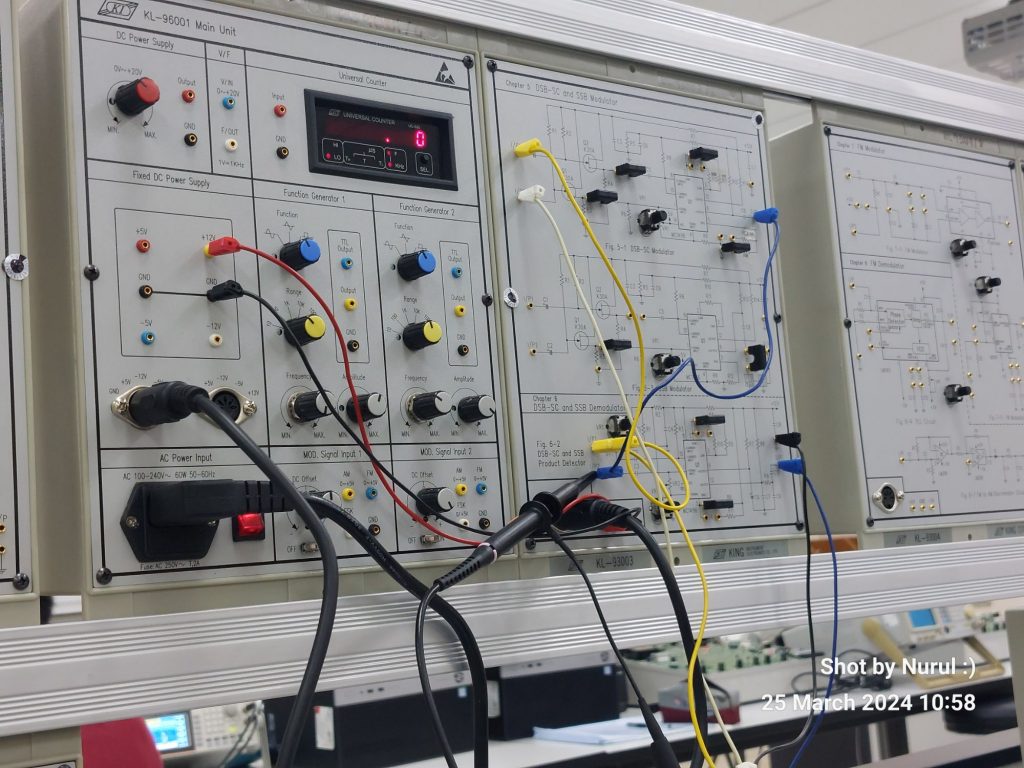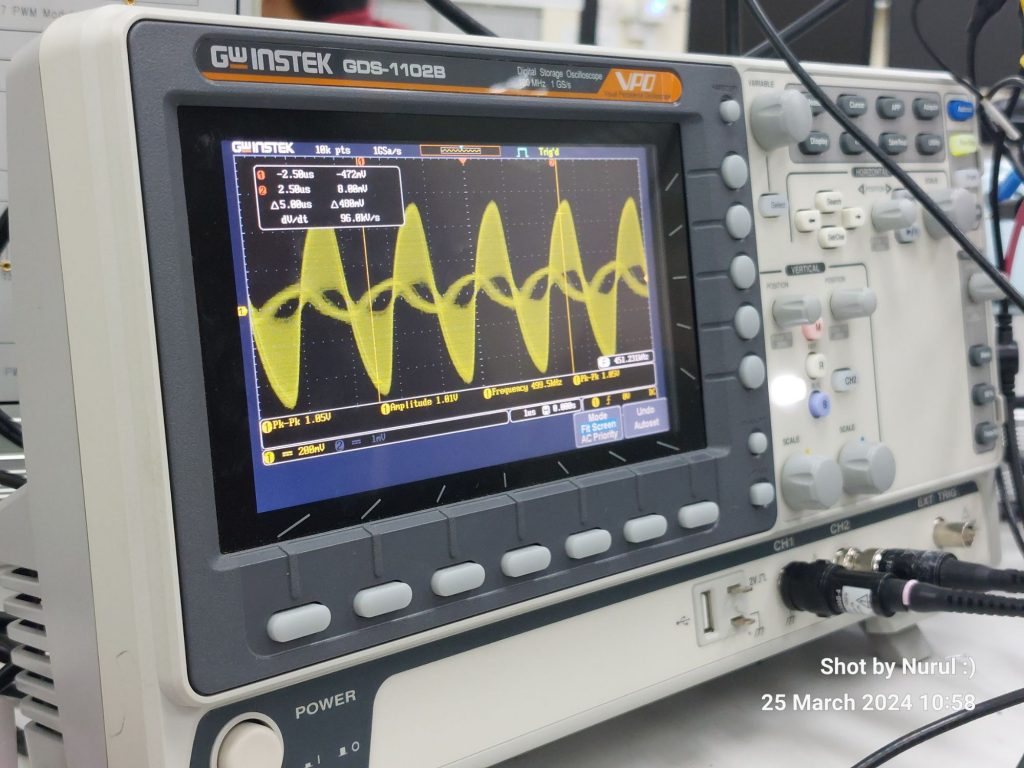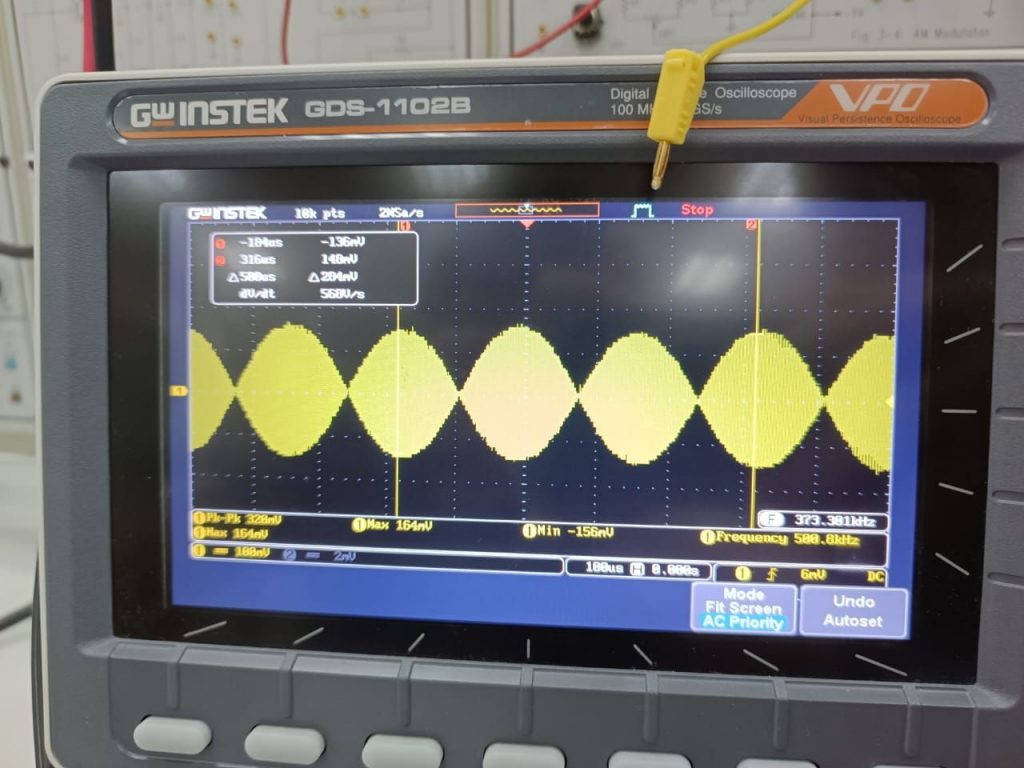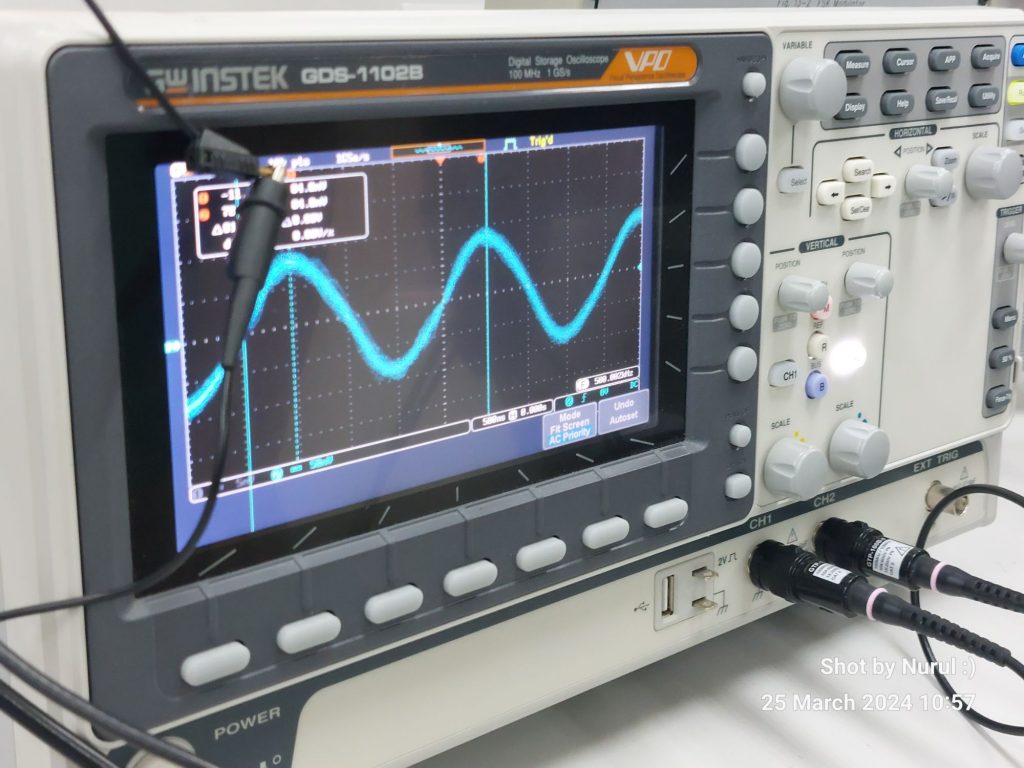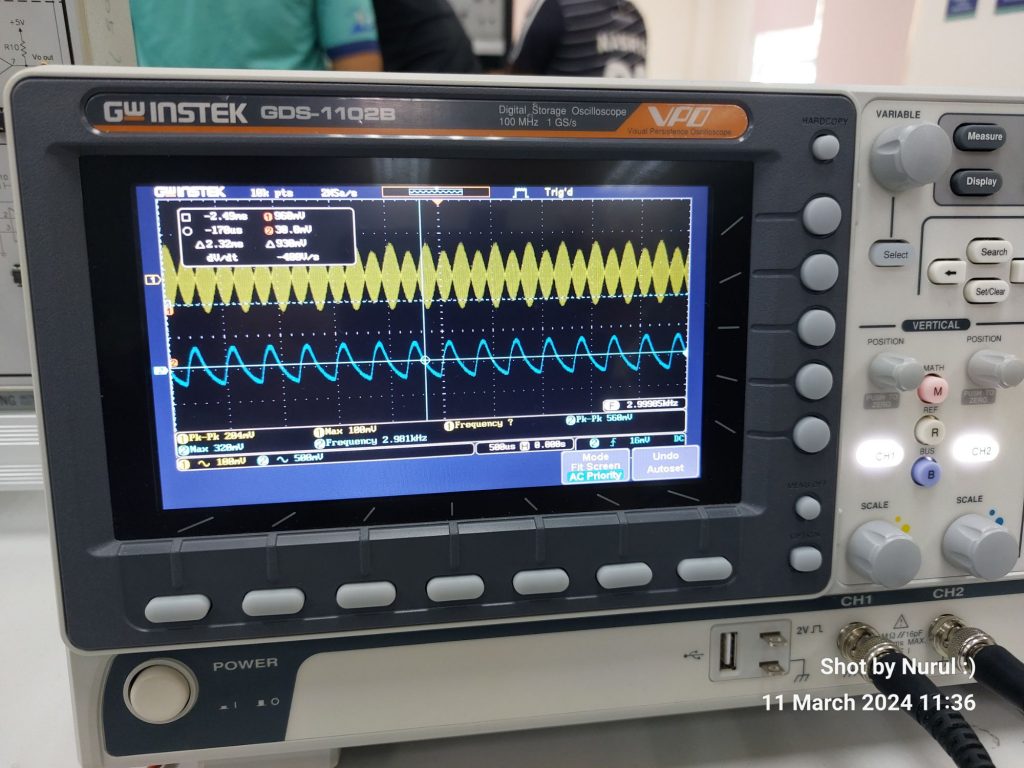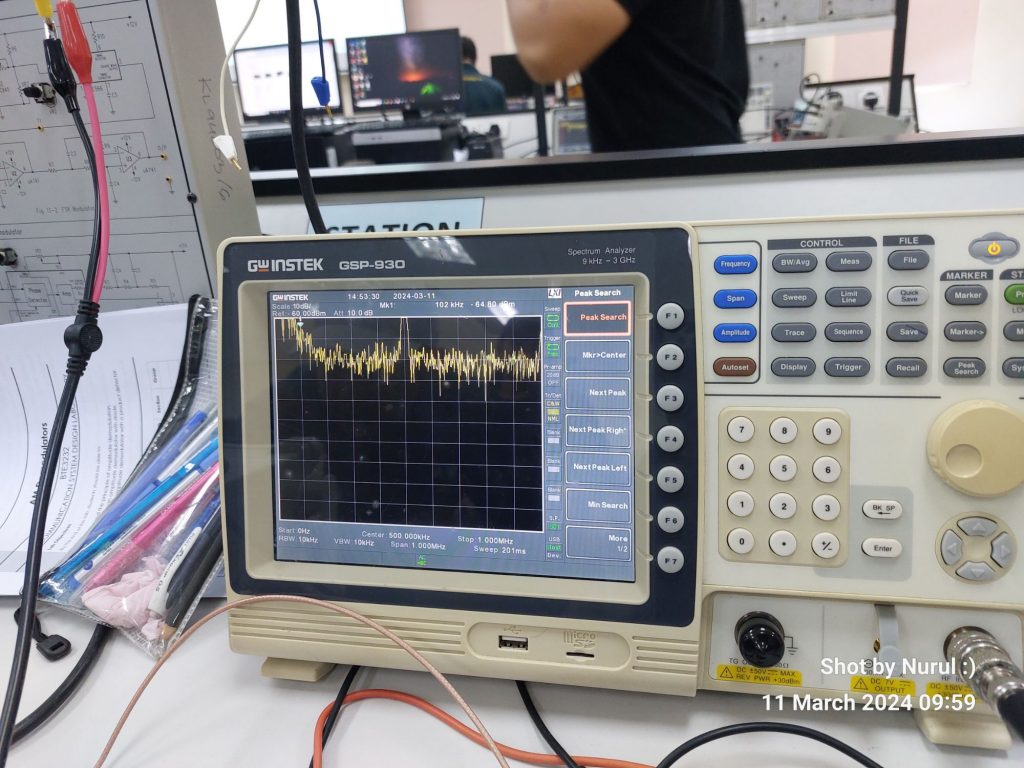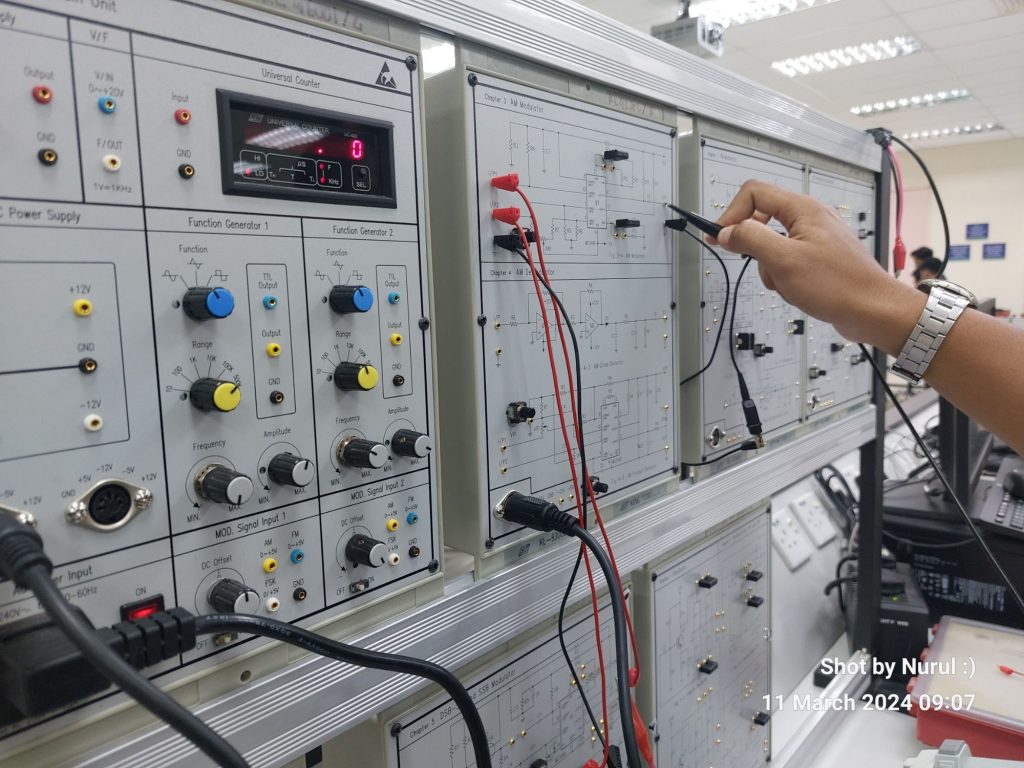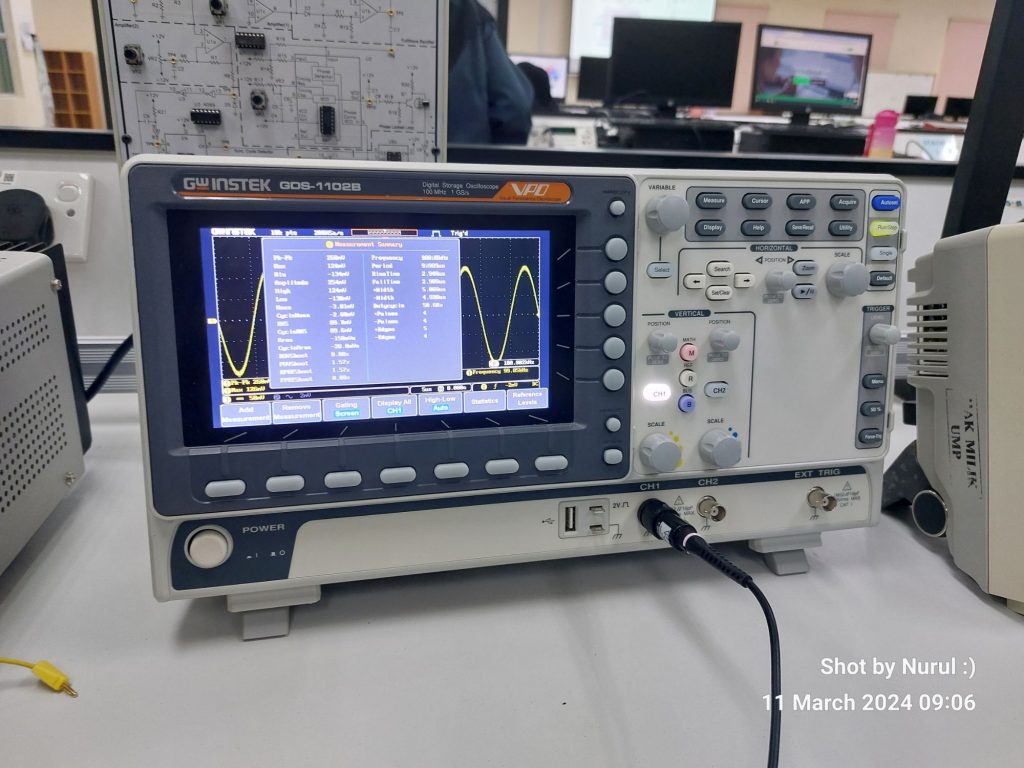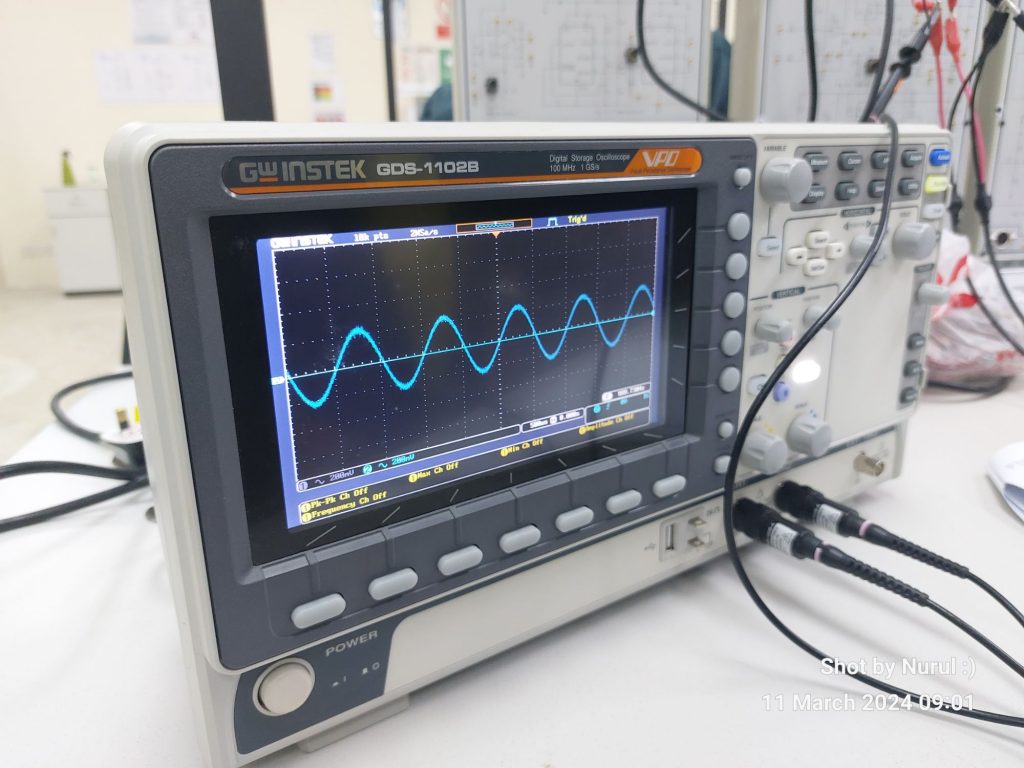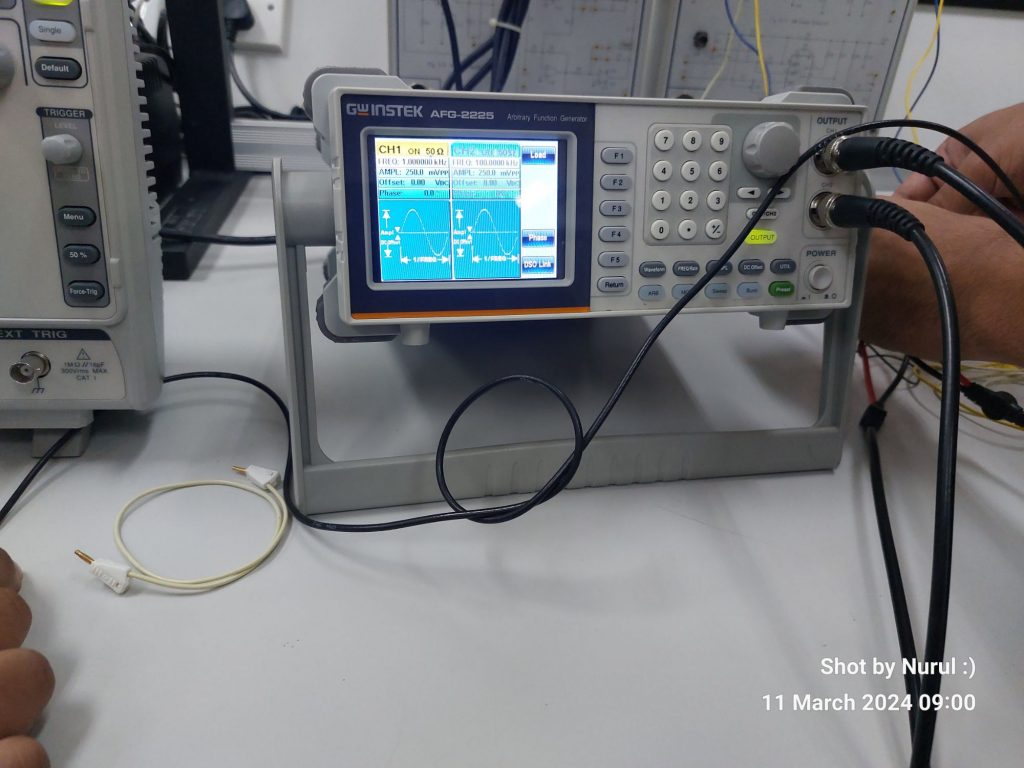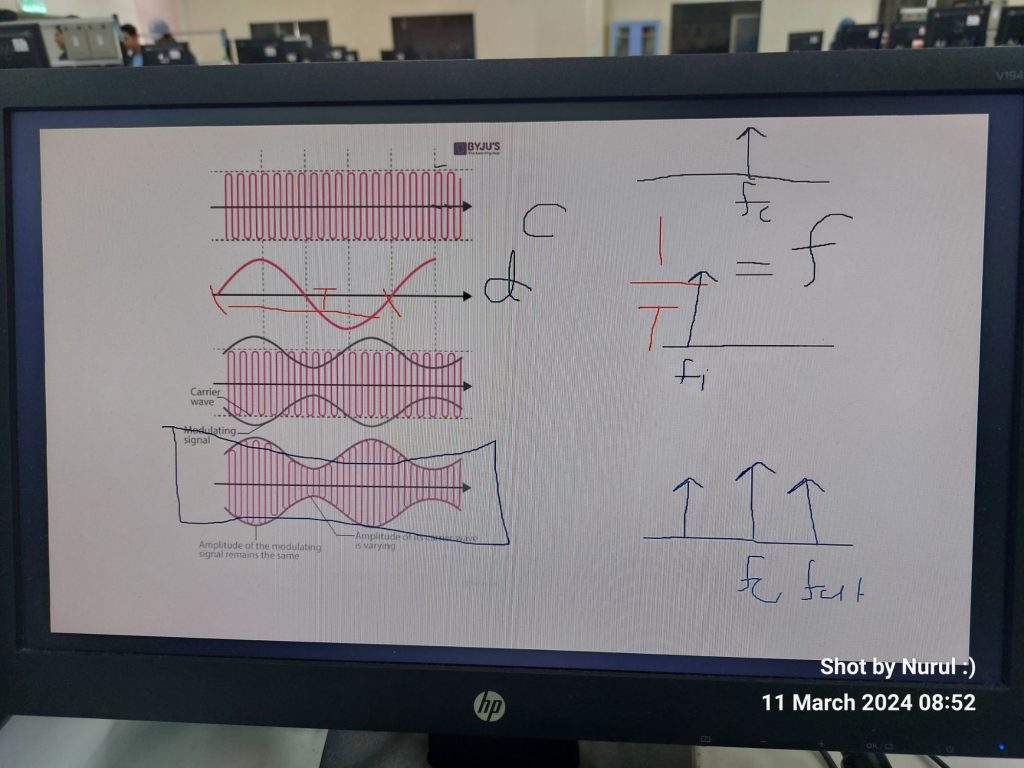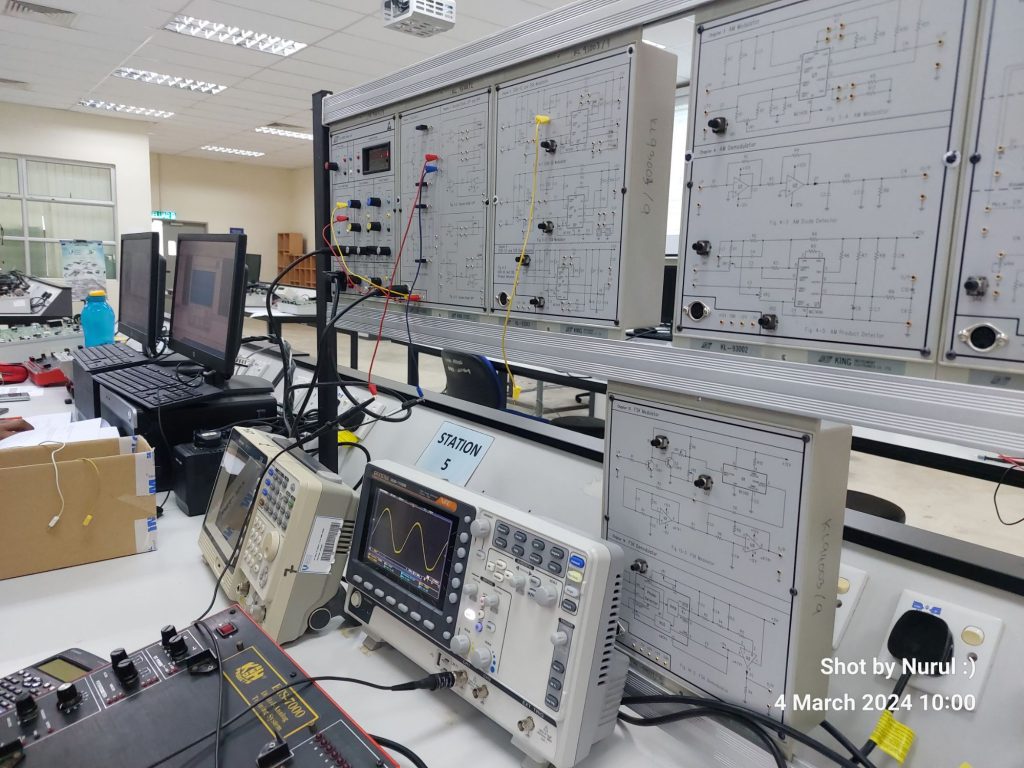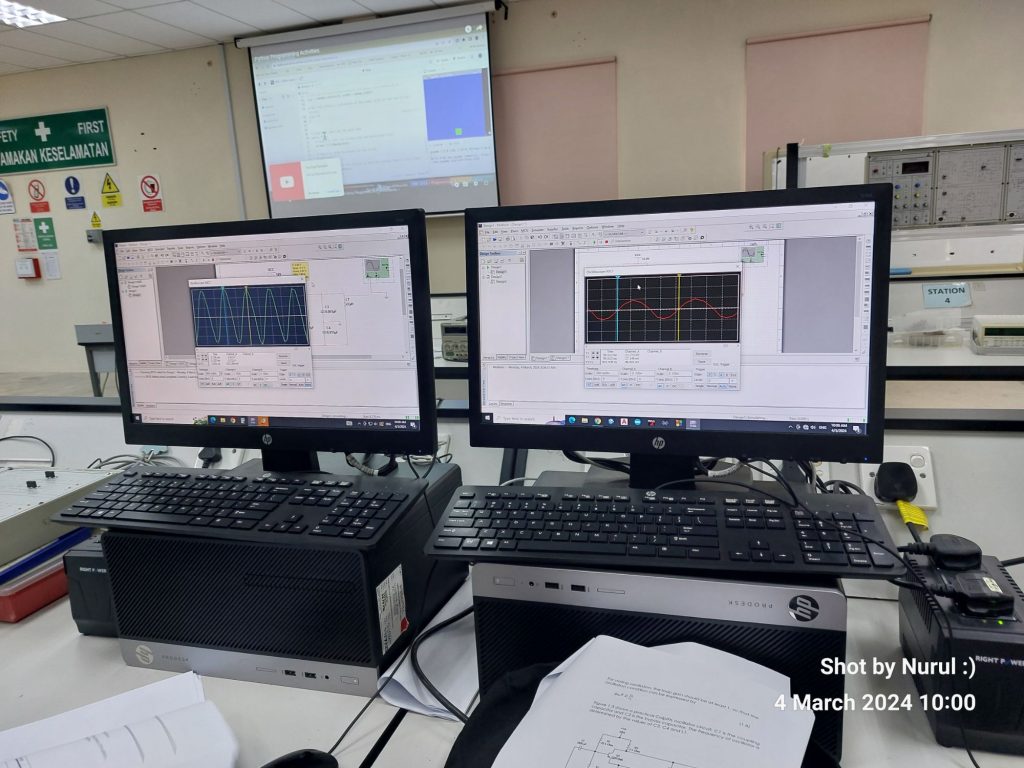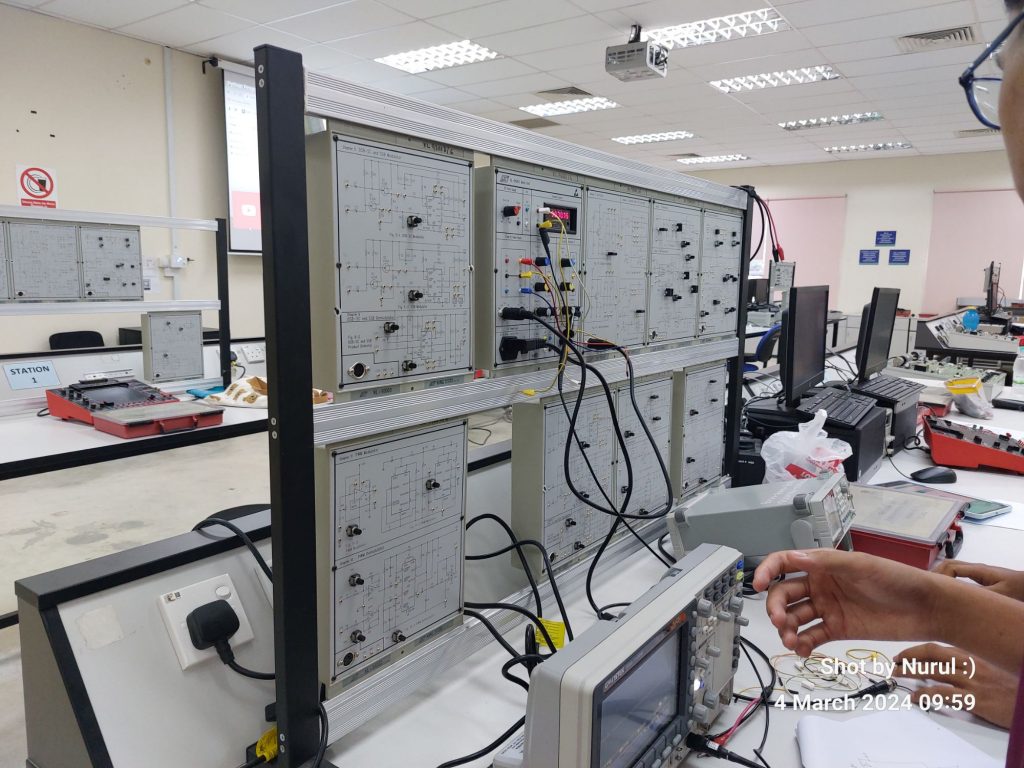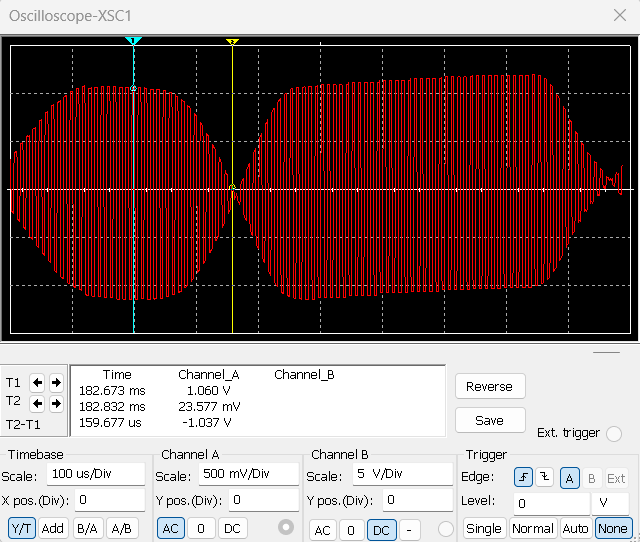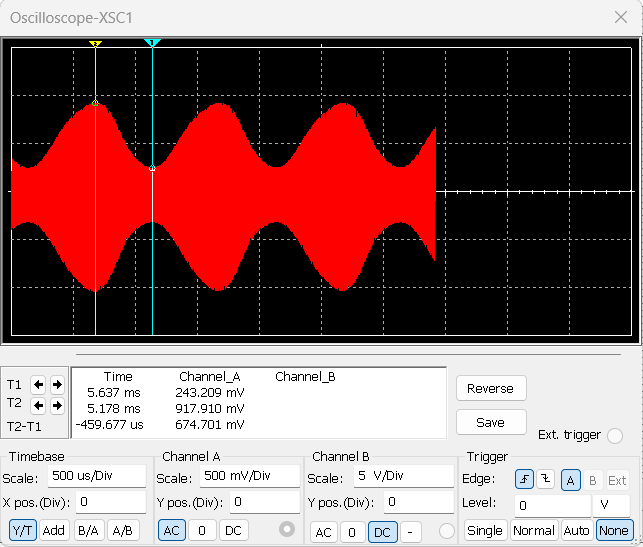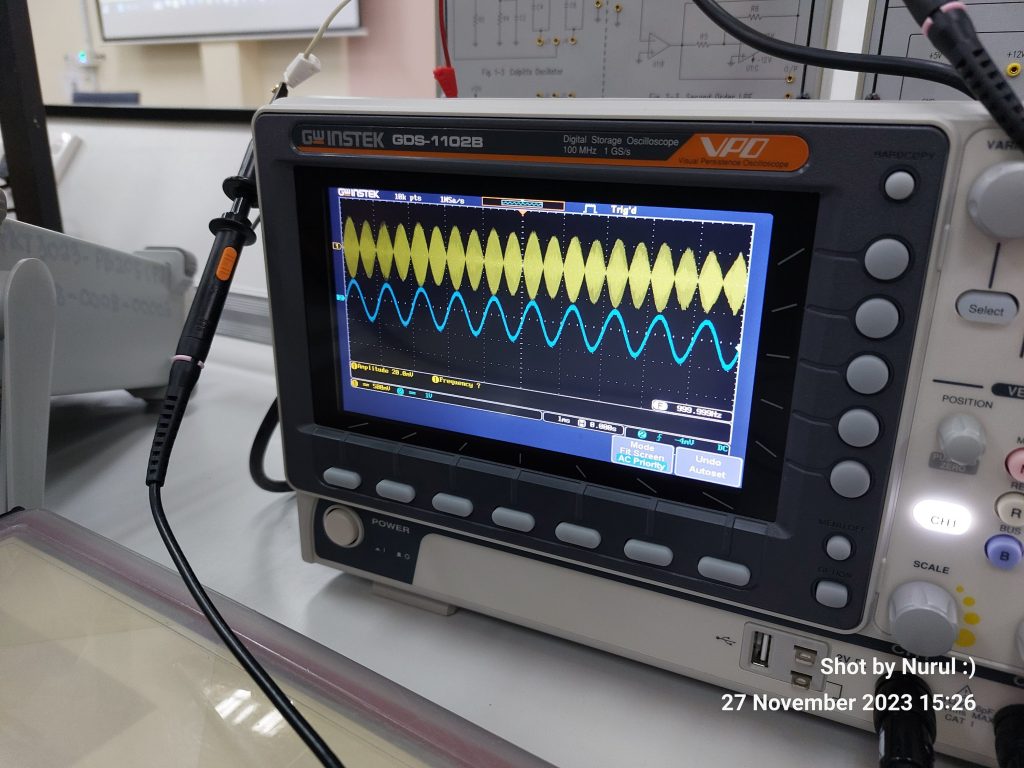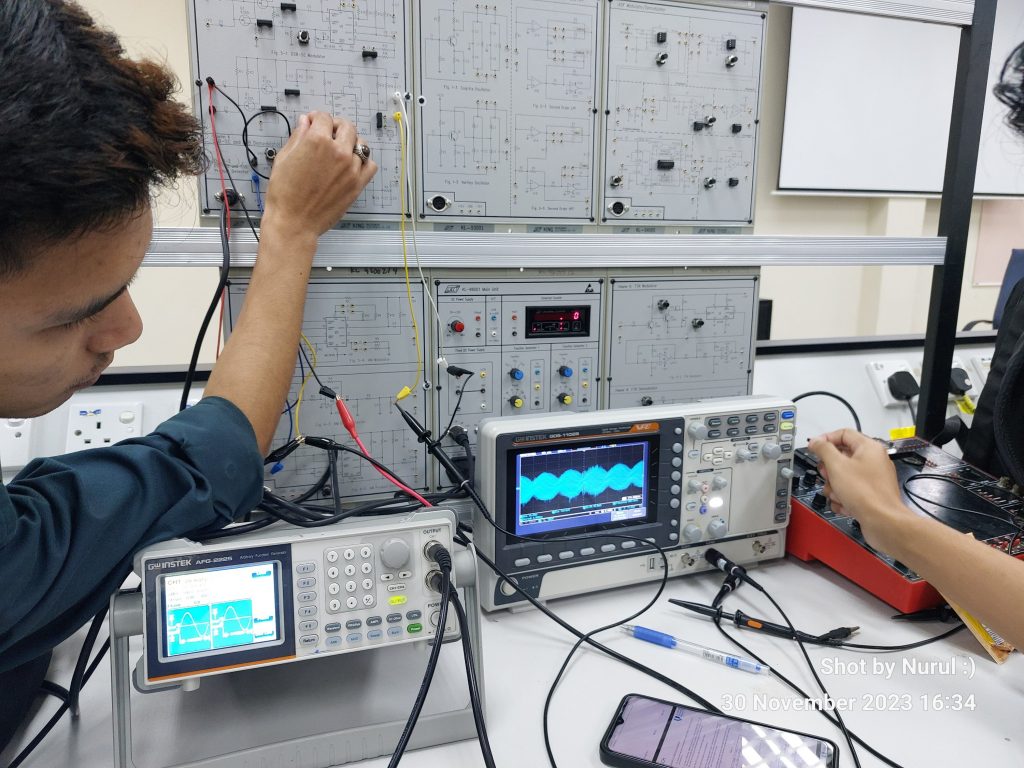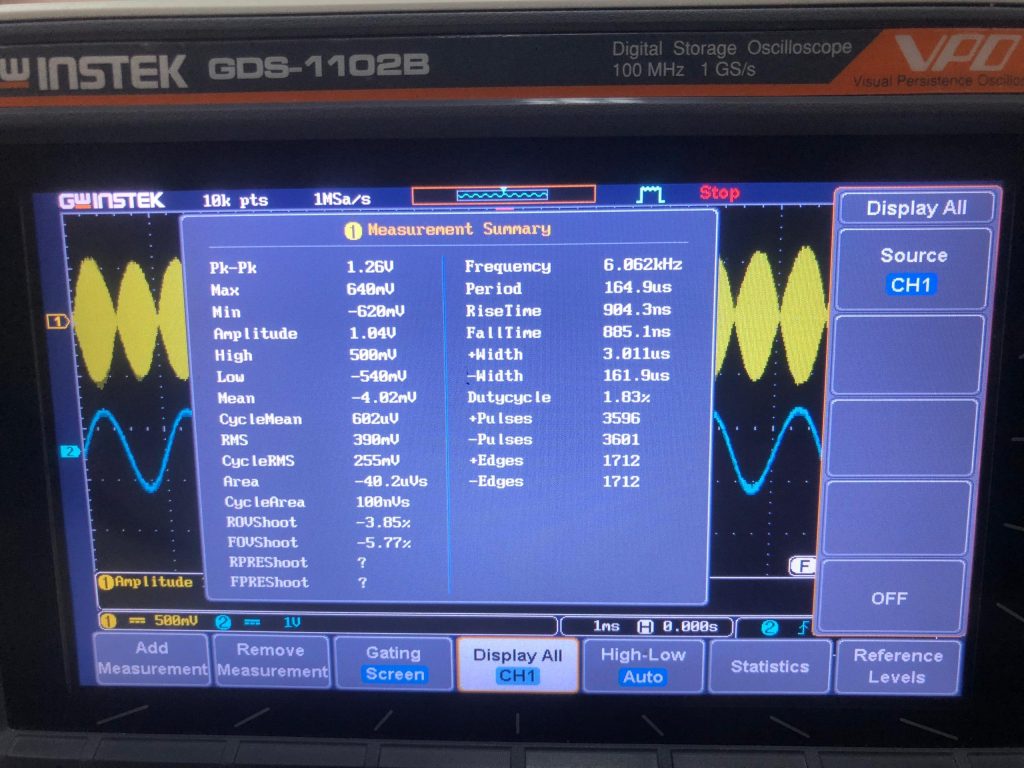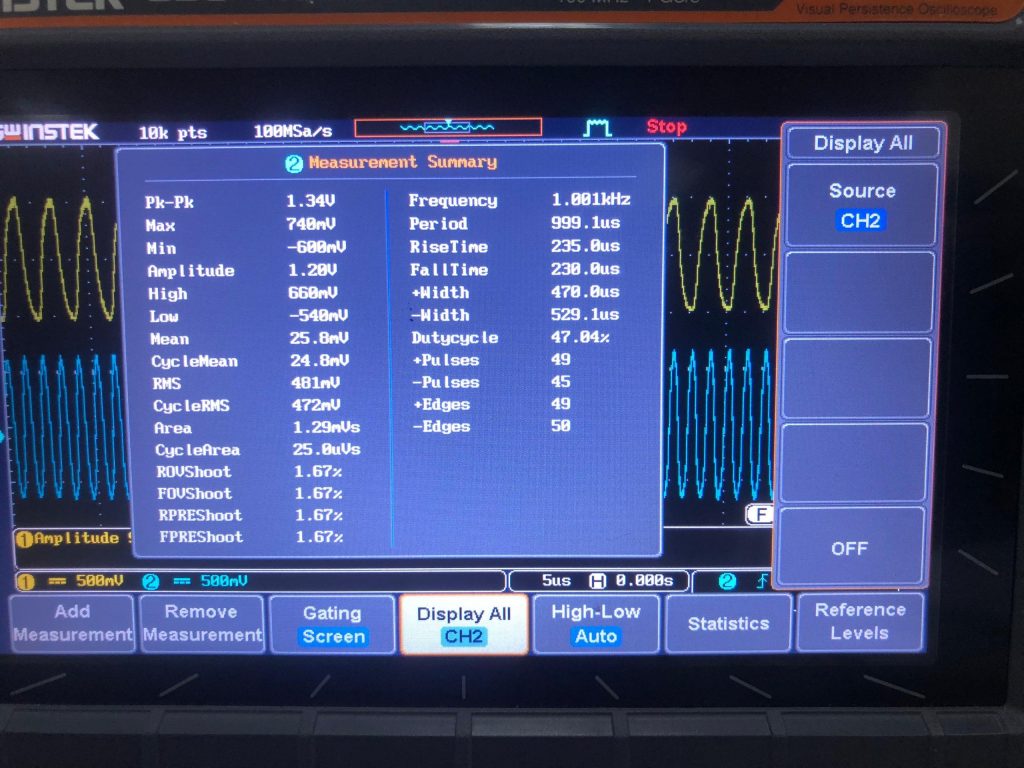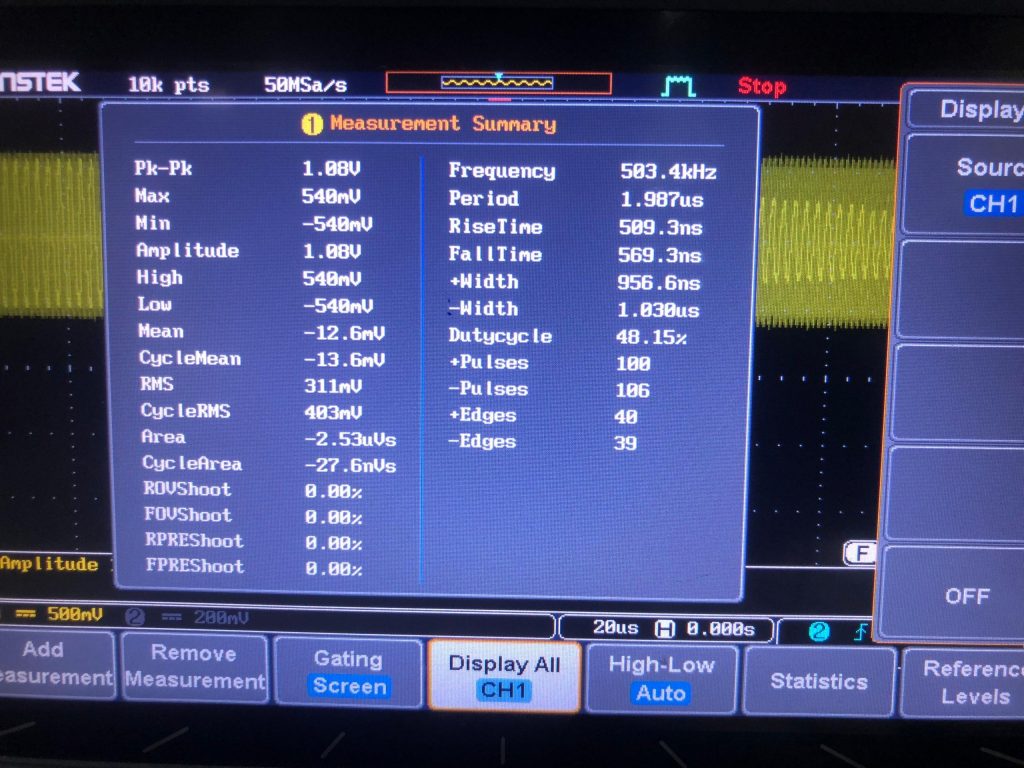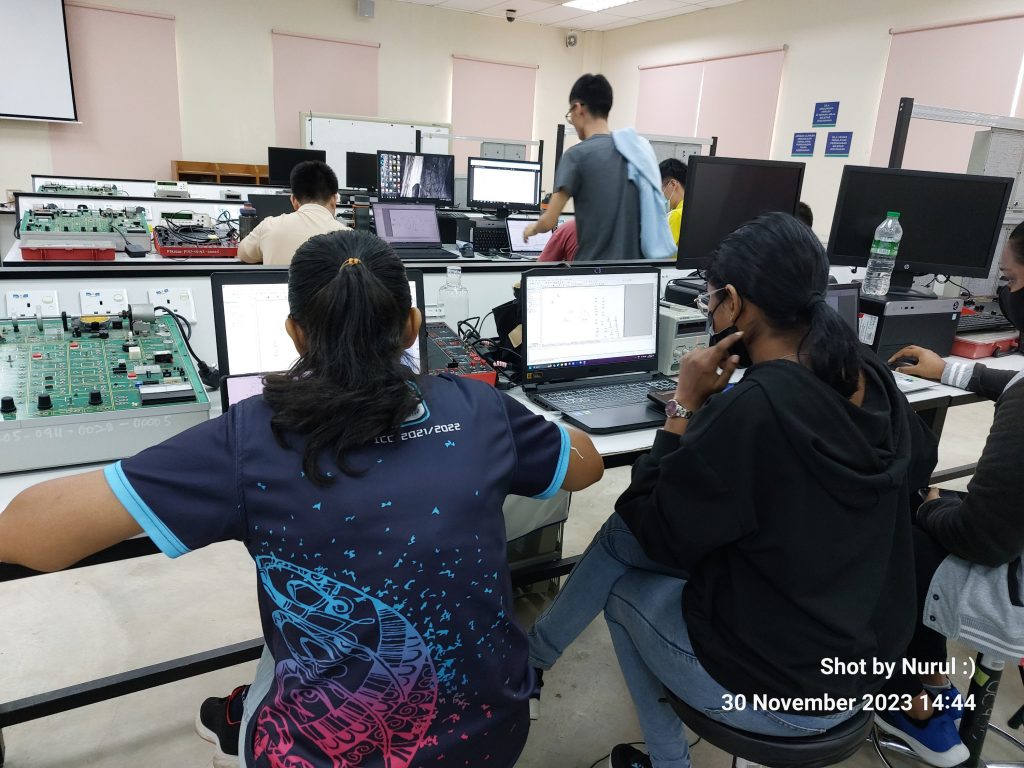
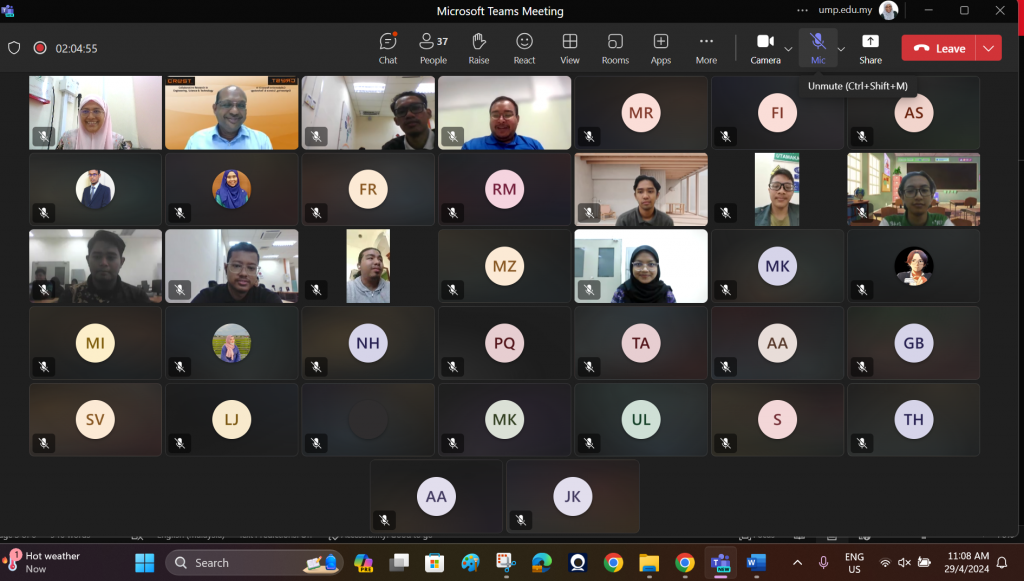
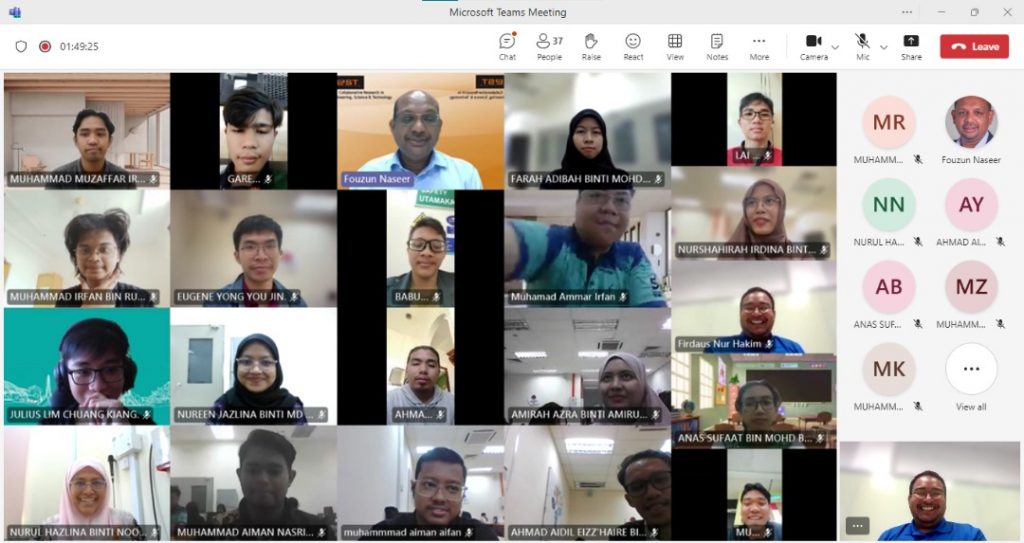
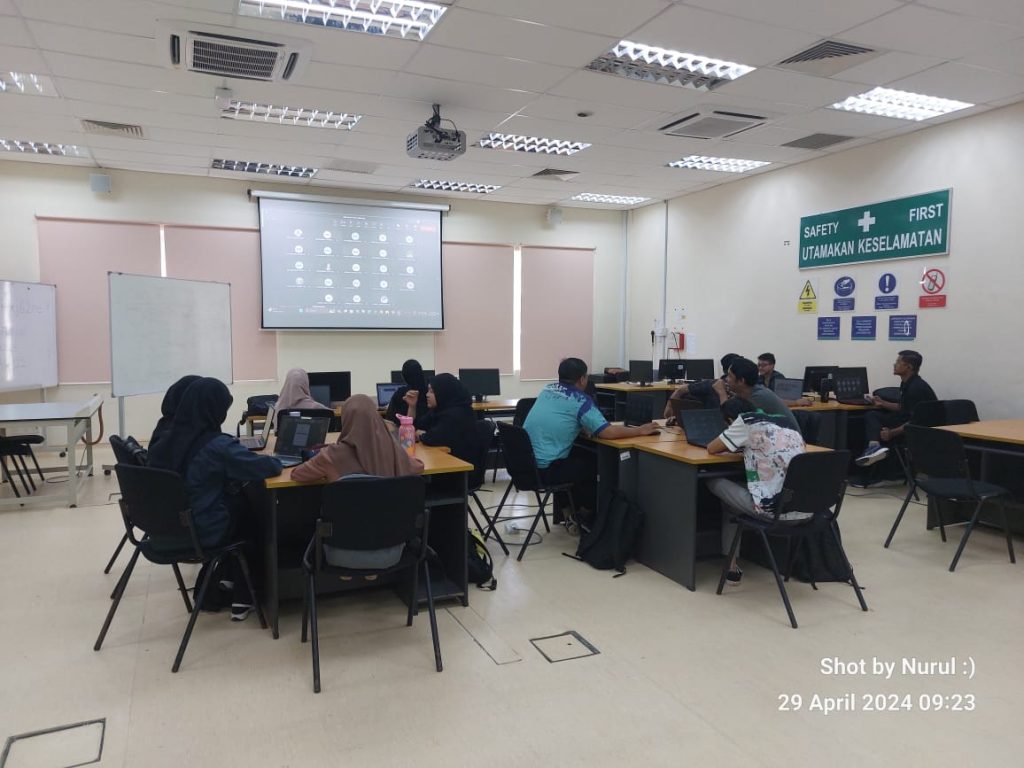
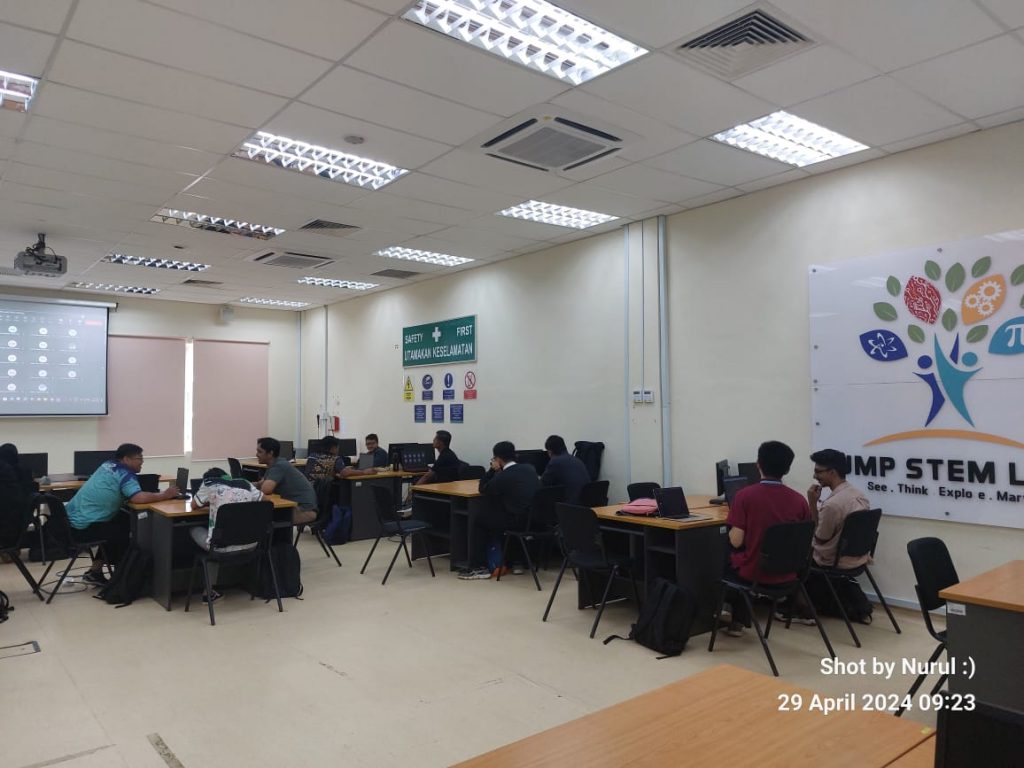

Today’s industrial talk session at UMP STEM Lab =), featuring an experienced speaker, Ts Fouzun Nassir, R&D Director of CREST (https://crest.my/). Mr Fouzun delved into the subject of advanced wireless communication. The two-hour discussion was filled with engaging insights and thought-provoking questions, addressing various aspects of the communication technology. Let’s explore some of the key topics discussed during the session:
- The Decline of Ericsson and Nokia in Today’s Phone Market –
Ericsson and Nokia, once giants in the early days of wireless communication, have seen a decline in their relevance in today’s phone market. Factors contributing to this decline include increased competition from emerging players, failure to adapt quickly to changing market trends, and perhaps complacency in innovation. To regain relevance, Ericsson and Nokia could focus on diversifying their product offerings, investing more in research and development, forging strategic partnerships, and enhancing their brand image through marketing and customer engagement initiatives. - The Persistence of 2G Networks Despite 5G Advancements –
Despite the advancements in 5G technology, there is still a reliance on 2G networks in certain regions or applications. This reliance can be attributed to several factors such as cost-effectiveness, backward compatibility with older devices, and the availability of infrastructure in remote or rural areas. Additionally, 2G networks are often used for essential services like voice calls and messaging in regions where 5G infrastructure is not yet widespread. - The Role of AI/ML in Improving Wireless Communication Systems-
AI and ML technologies play a crucial role in optimizing network performance and spectrum utilization in wireless communication systems. By analyzing vast amounts of data, AI algorithms can dynamically adjust network parameters, predict user behavior, and optimize resource allocation. This leads to improved network efficiency, reduced latency, and enhanced user experience. - Addressing Security and Privacy Concerns in Communication and IoT Projects –
With the proliferation of communication and IoT projects, security and privacy have become major concerns. Advanced systems employ robust encryption techniques, authentication mechanisms, and intrusion detection systems to safeguard user data against evolving cybersecurity threats. Additionally, privacy-enhancing technologies such as differential privacy and homomorphic encryption are being explored to protect sensitive information. - Future Applications of NFC Technology in Malaysia –
Beyond payments, NFC technology holds potential for various applications in Malaysia, including transportation ticketing, access control, healthcare data management, and retail loyalty programs. Initiatives are underway to explore these applications further and harness the full potential of NFC technology in enhancing convenience and efficiency across various sectors. - Environmental Sustainability in the Communications Hardware Industry –
As we strive for environmental sustainability and compliance with Sustainable Development Goals (SDGs), the communications hardware industry is adopting various methods to reduce electronic waste. This includes recycling programs, eco-friendly manufacturing processes, and designing products with longevity and recyclability in mind. Additionally, initiatives are being undertaken to promote the circular economy and minimize the environmental impact of communication technology. - The Potential Concerns Surrounding the Development of 6G –
There is a concern that the development of 6G may be more closed-source than 5G, potentially hindering innovation and progress. Unlike the collaborative and open approach seen in the development of 5G standards, the race to develop 6G technologies may lead to proprietary solutions and fragmented ecosystems. This could limit interoperability, stifle competition, and impede the widespread adoption of 6G technology.
The talk by En Fouzun Nassir provided valuable insights into the complexities and future prospects of wireless communication. Especially for BTE 3232 students, Communication System Design Laboratory.
Today’s tech talk by En Fouzun Nassir marks an exciting initiative in UMP STEM Lab Tech Talk 2024/2 series, aimed at bridging the gap between industry expertise and student learning. With a focus on the subject of BTE 3232 Communication System Design Lab, esteemed experts from various fields come together to share their wealth of experience and insights with students. These talks serve as invaluable opportunities for students to gain firsthand knowledge, engage with industry professionals, and enrich their understanding of real-world applications in communication system design.
To all BTE 3232 students, thank you very much for your active participations throughout the talk =).
Nurul Hazlina Noordin
April 29th, 2024
